- How to sail at night
Captains are often asked if it's possible to sail at night. In the vast majority of cases, the answer is yes, unless you are just starting out. You just need to know the specifics of night sailing — the rules of boat lighting, beacon signals, have navigation and nautical charts handy, and most importantly, follow basic safety rules on board. So, do you know what night sailing entails?

You can't do it without the correct lights
While on land, lights are primarily there to help us see, at sea it's the other way around. All boats must be properly lit for other vessels to see. And, a boat doesn't work like a car either, where we shine our headlights on the road ahead to see what's in front of us. At sea we rely on navigation, nautical charts, lighthouses and the captain's knowledge.
Basic boat lights include running lights, steaming lights and anchor lights. There are clearly defined and standardized rules for lighting a ship under sail at night . So the question of how to light a yacht at night has a very simple answer. Running lights, or side lights, show other vessels where your port and starboard sides are, with red indicating port and green starboard, and you must also have a white stern light on.
Lighting the yacht at night is very important because, unlike during the day, the helmsman cannot judge the distance and direction of other boats by sight. Running lights make the position and direction of the surrounding vessels visible, as well as their approximate distance, and helps to avoid possible collisions. Radar is also highly practical in this respect, as it shows the size and distance of the vessel.
However, when sailing there can be situations where the sails need to be lowered, and with that, the lighting also needs to be changed. If travelling under motor power , a steaming light (masthead light) must be turned on , which shines at the same angle as the side lights. When a sailboat is not under sail, it has to abide by the rules set out for power boats by COLREG (The International Rules for Preventing Collisions at Sea).
Lighting regulations when at anchor are again different. When at anchor at sea , only the anchor light should be on . According to the regulations this could be either a 360-degree white light atop the mast, or a light suspended from the boom, above the foredeck or on a furled genoa. If the boat is moored in port, the light is not normally used.
Navigation, GPS and maps
Nowadays, GPS and navigation aids integrated into the boat or that work as mobile apps are commonly used to determine the position of the boat. Modern technology is very accurate and reliable, but it is still worth understanding, reading and checking your position on paper nautical charts . After all, almost any skipper will tell you that their GPS or navigation system has at some point told them they were on land, even when tens or hundreds of metres from shore.
Thanks to nautical charts, you will not only know of possible danger spots, but also lighthouses , enabling you to easily and accurately determine your position with the help of a compass. Each lighthouse is different, being lit and flashing in a unique way. A nautical chart will tell you how to identify a lighthouse by the number of flashes, their frequency and the colour of the light. To determine your exact position, you’ll then need two lighthouses in sight that serve as reference points for each other.
YACHTING.COM TIP: Lighthouses are not only practical, but they are often buildings with impressive architecture that are well worth stopping off at. Take a look at 15 lighthouses you must visit .
Safety is paramount when sailing at night
Even during the day, there are clear rules regarding the movement of the crew on board. Basically, the crew should not stand unless they are engaged in manoeuvres. In all other cases, they should be sitting on benches, at the side of the boat when heeling, or in the cabin. Apart from the fact that a standing crew member could obstruct the helmsman's view, it also poses a greater risk of falling overboard . If you're interested in getting to know this subject in more detail, check out our article Sailing Etiquette A to Z .
At night, the rules are even stricter to ensure the crew remain as safe as possible and avoid damaging the yacht. If a crew member is on deck at night while sailing, they should wear a lifejacket and ideally be attached to the boat with a lifebelt or harness.
Except for really experienced seafarers, the rule of thumb is that there should be at least two people on board when sailing at night. And the captain should schedule shifts so that there are always two rested crew members on board. After all, you need to be doubly vigilant when sailing at night, and staying awake all night is certainly not conducive to alertness — especially when manoeuvring or entering port. For the same reasons alcohol is prohibited when night sailing. While during the day, crew members other than the helmsman can toast Neptune or have one glass of wine or beer, drinking alcohol is not permitted during a voyage at night. By all means celebrate a successful journey upon arrival in port at a local tavern, but it definitely pays to keep a clear head at sea.
Specifics of night sailing and boat handling
Steering and controlling the boat is not particularly different during the day and at night. There are just a few nuances to make sailing that bit smoother. If you're on a vessel you know well, that’s one thing, but if you're on a charter boat , it's worth marking the sheets and other lines so that you know your way around in the dark.
Sailing at night, it is also important to assess the weather conditions well. What you would normally do during the day can be significantly more challenging at night and requires a more careful assessment of weather conditions and weather patterns. It is always better to choose smaller sails and if you have even the slightest doubt about anything, postpone the trip.
When entering a harbour or sailing close to shore, be doubly cautious. There are several risk factors. During the day, the surrounding boats, the rocks and the potential hazards on the surface and below are visible. At night you have to rely on navigation, charts and lighting. When entering the harbour, charts and GPS can provide you many clues but lights can cause issues. For example, you might get dazzled by the light from the shore, the anchor lights of other boats are easily confused with the lights on land, and, last but not least, you may encounter poorly lit fishing boats. However, if you keep in mind all of these potential risks, you will arrive safely in the harbour.
The magic of night sailing
When compared to sailing during the day, night sailing places more demands on the captain's experience and knowledge of sailing regulations. But it is also a truly romantic experience. Millions of stars glistening in the night sky and the waves sparkling in the moonlight. If you're lucky, sailing out of the mist from land on a clear night with a near full moon, it will seem almost like daylight.
If you're serious about sailing and steering your boat, there are other benefits to night sailing. Navigating at night sharpens the senses and enhances the sailing experience as well as your experience of the sea itself. It truly gives a whole new meaning to sailing. But if all you want is to just enjoy yourself, night sailing is one of the most romantic experiences you can have. Check out our article on how to enjoy romance on board a yacht charter .
Are you new to the sea? We will recommend experienced captains who will take care of you on the ship. Give us a call.

Denisa Nguyenová
Faq how to manage a night sailing.
- Yachting World
- Digital Edition

Night sailing – the essential guide for offshore cruisers
- April 19, 2017
Chris Tibbs on how to prepare for and enjoy offshore night watches

With a full moon and following wind, night sailing can be one of the great pleasures to be had when passagemaking; but on a dark night in a gale it can be very stressful and leave you longing for dawn.
Whether you are crossing the Channel or crossing an ocean, sailing in the dark is something that everyone experiences at some stage in their sailing career and with some simple preparations you can make it easier and safer.
Have you ever been asked by a non-sailor: “What do you do out on the ocean at night?” It often comes as a surprise to find that sailing has always been a 24-hour pastime.
Traditionally, passages were made at night and planned so that landfall was at dawn to assist with identifying the lights and confirming the yacht’s position. Then the skipper could enter port safely during daylight.
With GPS we now rather underestimate the usefulness of lights for position fixing and, as more yachts are fitted with AIS, crossing shipping lanes has become less difficult now that you are not solely reliant on identifying each ship’s navigation lights.
Of course, not all vessels have AIS!
How to prepare for long passages
Generally night sailing falls into one of two categories: the first is a one-off night sail, such as the start of a summer cruise to get the boat to your cruising ground, or perhaps a RORC or JOG cross-Channel race. The second is a long passage where there will be a number of days between the start and finish with consecutive night sails.

For me there should be little difference when setting up the boat although there will be a difference in watchkeeping.
Whether cruising or racing, the crew spending consecutive nights at sea requires a more rigid watch system – covering the full 24 hours – than the one-night crew. But the principles of watch-keeping do also apply to single nights at sea.
One of my pet hates used to be the Friday night cross-Channel races. Crews would arrive all enthusiastic after a hard week at work, but by 0200 tiredness had set in and we would see ourselves slowly working our way to the back of the fleet with only one or two awake enough to be competitive.
Most boats are logical in their layout and it is always a pleasure when a new but experienced crew comes on board as they will rarely need telling twice which rope is which.
Yes it is good to label clutches but soon after joining everyone should know by feel and position which rope is which.
Close your eyes and feel – size becomes very apparent and the covers will feel different. Hold the spinnaker halyard in one hand and the topping lift in the other; feel the different sizes and textures.
It is always good to keep the same ropes in the same position so at night in the dark, when the label is obscured anyway, it is easy to pick up the right one.
Humans are not particularly good at seeing at night and it takes a long time to get full night vision.

The eyes are incredible complex and there are three phases in adapting to the dark.
Initially our pupils dilate to allow as much light in as possible; this may take from a few seconds to a minute to happen.
The next phase takes place in the cone cells of the eye. In the absence of light we get chemical changes in the cell and it can take ten minutes for the cone cells to adapt to the dark.
Lastly we have rod cells which are responsible for black and white vision and these contain rhodopsin which is reactivated in the absence of light. This will take several hours to fully adapt to the dark.
Although we are all different, as a rough guide it takes about ten minutes to get most of our night vision, which gets slowly better over the following few hours. This can be put back to zero very quickly by the use of bright lights.
How to use lights on board at night
All crew members should have a flashlight and it’s worth keeping a powerful spotlight on deck for rig checks and emergencies.
When sail trimming try and use as weak a flashlight as possible and also warn the helmsman and lookouts before using it.

We have had great success in painting the lenses of flashlights with red nail varnish: the red light is much kinder on the eyes and nail varnish is more readily available than red flashlights.
Red lights are also crucial below. Some yachts will have split lights with red to be used at night. In the past, I have used stick-on red film from a photographic shop.
Generally we cover half of the lights red when cruising, but for long offshore passages we will cover all the lights with red film to avoid the wrong switch being used.
It would be nice to have two complete circuits to turn off the white lights completely, however ten minutes with a pair of scissors and all lights are covered.
Head torches leave both hands free, but I actually hate them on deck when sailing. If spoken to it is the natural reaction to turn and look at the person speaking, instantly ruining their night vision. Some head torches will have red bulbs but any bulb shining straight into your eye is damaging for your night vision.
Use light sparingly as the less you use, the less you tend to need. With the latest instruments and multifunction displays you can control the brightness of the image: keeping it to a minimum helps night vision and also consumes less power.
I am told that in training, some Mini Transat and Figaro sailors will practice sailing blindfold.
Night sailing tips for cruisers
I have been involved with the ARC for many years and it seems that most crews will routinely drop spinnakers and reduce sail for the night. All very prudent but nights are long in the tropics – approaching 12 hours of darkness.
I am not one for fixed rules, so I would rather see a boat set up for simple sail handling and allow conditions to dictate the sail plan. This also depends on the number of crew on board and the watch-keeping regime.
It makes sense to mark halyards and control ropes. I like to sew in a whipping of a contrasting colour onto the line marking the correct position just out of the clutch. This can be felt as well as seen and is particularly useful when reefing.
I also like to mark halyards at the maximum hoist to avoid anyone getting too enthusiastic and winding the splice or knot into the sheave. This is something racing boats have done for years and for cruisers would be useful for both day and night sailing.
Luminous draft stripes can be added to sails to help with sail shape and small amounts of reflective tape can also be stuck around the boat to help see and identify equipment.
On my boat the wheel is marked with a turk’s head knot to feel the centre point, to which we have also added some reflective tape to make it visible in low light.
If you make sail changing and trimming simple you can usually do it with just the ambient light and a small flashlight. The decklight knocks out any visibility forward. A tricolour light should light up the windex and if conditions are marginal, a steaming light can be used to check spinnaker trim, although any lights forward spoil night vision and, of course, a steaming light indicates to others that you are motoring not sailing.
When planning a voyage, make life easier and safer by maximising your moonlight hours: sailing under a full moon and clear sky is as easy as sailing during the day.
Crew preparation
Sailing is no fun when tired and hungry. There seems to be a tendency on cruising yachts to run short-handed with single-person watches. Of course, single-handed sailors circle the globe in ever faster yachts, but the average cruising yacht is not really very well set up for single-handed sailing.

Hot drinks and snacks at night are essential.
The typical cruising yacht has a number of roles to perform, so the ideal deck layout in terms of sailing efficiency will be compromised by the requirements of the cabin space below.
This tends to encourage slow sailing: if it is hard to single-handedly reduce sail, it makes sense to automatically reef at night so you do not have to call anyone to help.
Two or three hours is long enough to be up on your own and with shorter watch times, there is the opportunity to change sail during a change of watch when there are two people on deck.
When my wife and I are double-handed passagemaking, we stick to three-hour watches, as this is as long as I can keep concentration. But it is tiring. For ocean crossings we tend to have an extra person to help.
Night raids and the importance of the midnight snack
When racing you have to push 24 hours a day to be competitive, although you can be a bit more conservative at night to help preserve the boat and crew.
When I skippered Concert in the BT Global Challenge, we would occasionally do a ‘night raid’. This involved handing out a few extra treats for dinner then, putting the best drivers on the helm, we would really push through the hours of darkness. This usually paid off with a few miles gained.
I would be happy to cross an ocean on freeze-dried food but I think I am in a minority! Food and drink is important for fuel and also for enjoyment.
Food at night is particularly important for energy and well-being. Sealed personal drink flasks stay hot for a couple of hours, the biggest danger being burning your mouth in the first hour. Snacks are also good on night watches: our bodies are used to sleeping at night and a snack helps to keep us going.
One trick that I like is a Cup-a-Soup in a wide-mouthed flask with a few teaspoons of couscous added. Put the lid on and leave it five minutes and you have a tasty and filling savoury snack!
How to be a watchkeeper
Watchkeepers should not take the responsibility lightly. You need an experienced watchkeeper crossing the Channel due to the level of shipping and navigation required on the passage. Further offshore a less experienced watchkeeper has more time to call the skipper.
Why longer passages are easier
Everyone on board has to get enough sleep. It may be possible, physically, to go 24 hours without sleep, but decision-making suffers and it is easy to make mistakes.
I prefer, if possible, to have at least two people on a watch, this avoids having to call extra crew for small sail changes or manoeuvres. It does also mean that when you are off watch, your sleep is not disturbed. With two on watch, three or four-hour watches pass quickly, split between steering, lookout, and navigation.
Racing is a bit different as there is generally a bigger crew. I am not a fan of everyone on the rail all night, and rotating the crew so everyone gets some sleep is important.
For longer races like the Fastnet I would have a rigid watch system so everyone gets some good sleep. If anything goes wrong then it always seems to happen at about 0400 when people are at their lowest ebb.
I would also get into the watch system early, probably before Portland, to get into a rhythm. Our bodies are very complex and need time to adjust; a short passage of two or three nights can be more tiring than a transatlantic.
Personally I find it takes about three days to get settled. I then get one really good deep sleep and I am fine for the rest of the voyage. I tend to find short passages – anything less than three days – more tiring, which is why I prefer a bigger crew for sailing a few hundred miles than I do for sailing longer passages.
Laws to Follow for Boating at Night
Before embarking on a nighttime boating journey, you must understand the rules and laws for night boating. These laws help boaters remain safe and protect boats from collisions or other accidents. Check specific laws for boating at night in your local area or state to ensure you follow the right ones.
In general, here are some essential night boating rules:
- Navigation lights: You must use the proper lights to signal your location to other boats while in darkness. Navigation lights vary by boat, but most contain a red and green light near the bow, a white light by the mast and a stern light at the back. These lights indicate the approximate dimensions of your boat. You should keep these lights visible and brightly lit at all times.
- Sound requirements: Your boat must have specific sound tools to alert other boats of your intentions. Sound equipment depends on your boat’s dimensions. Boats less than 39.4 feet in length must have a sound-producing device , like a bell or whistle. If your boat exceeds this length, you need a whistle and a bell on board. In addition, you must be able to hear the whistle for half a mile .
- Speed limits: Depending on your location, the area might have specific speed limits for boats. You must follow these rules at night just as you do during the day. Many boaters move slower than the speed limit for optimal safety.
- Safety equipment: Many federal and state laws require boating vessels to carry specific safety equipment types. For instance, all recreational vehicles must contain one life jacket for every person on board. Research your state’s required safety equipment before setting out on the water. These rules apply to night boaters, too, so it’s important to ensure you have the proper equipment before it grows dark.
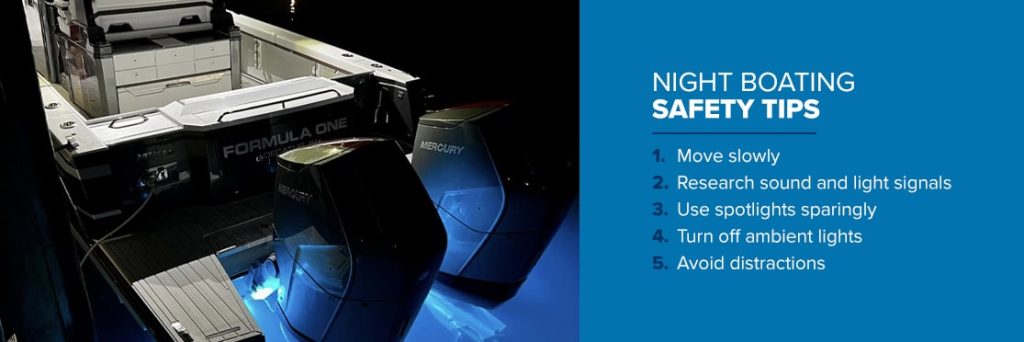
Night Boating Safety Tips
In addition to following night boating rules, you should use the correct safety procedures at night. Here are a few safety tips for night boating:
- Move slowly: You should move your boat at a slower speed than normal. The low visibility makes it harder to see defining features, so it’s essential to slow down. Reducing your boat’s speed makes it easier to adapt to sudden changes or redirect your position.
- Research sound and light signals: Because it’s more difficult to see other boats at night, it’s vital to use sound and light signals. Study and practice these signals beforehand for maximum safety. For example, you should understand maneuvering sound signals before setting sail after dark.
- Use spotlights sparingly: Avoid using spotlights while out on the water. These lights send a glare onto the water, affecting other drivers’ visibility.
- Turn off ambient lights: Another best strategy for boating at night is to dim all ambient lights on your boat. Only light your navigation lights while you’re on the water. Other lights like cabin lights, mobile devices and courtesy lights can detract from your night vision and distract other boaters.
- Avoid distractions: Stay focused on steering your boat and avoid distractions. For example, stargazing might sound like an excellent idea, but it could cause seasickness or motion sickness while the boat moves. As the driver of the boat, you must stay focused when navigating to ensure your and your passengers’ safety.
Following the proper safety guidelines makes night boating a rewarding and unforgettable experience.
Night Boating Packing List
Another important aspect of night boating is preparing your boat with essential items, including:
- Safety gear: As mentioned, it’s crucial to pack safety equipment for your nighttime excursion. Bring life jackets, floatation devices, fire extinguishers, sound signaling devices, radios or cell phones, flashlights, medical kits, or other safety tools.
- Warm layers: Temperatures can change drastically at night when the sun sets. Pack extra clothing to maintain warmth throughout your journey. Longer layers are also more effective at keeping bugs away. In addition, you might need a change of clothes if you’re caught in the rain. You could pack extra jackets, long-sleeve shirts, pants or hats. Bring enough clothing for all boat passengers.
- Food and water: Food and water are essential for any boating trip. This supply can prevent hunger and dehydration if an accident or other mishap occurs. It’s best to pack non-perishable foods like jerky, trail mix or cereal. You might also want to pack snacks for the nighttime journey and leave the other supplies as emergency food. Either way, make sure you bring enough for all passengers.
- Sleeping supplies: If you plan to sail all night long, sleeping gear can make the experience more comfortable. You could bring sleeping bags, pillows, blankets and other sleeping equipment for an overnight trip.
- Bug spray: Bugs can be just as annoying at night. Bug spray repels oncoming bugs and makes your journey more enjoyable. By packing extra bug spray, you can ensure they stay away throughout the night.
- Towels: Towels are always useful for boating trips. They can help you stay dry and comfortable during the journey.
- Navigational devices: Remember your GPS device, chart plotter, compass or radar. These tools can describe your exact location even when it’s completely dark, making them essential safety features. If any devices are battery-operated, pack extra batteries just in case.
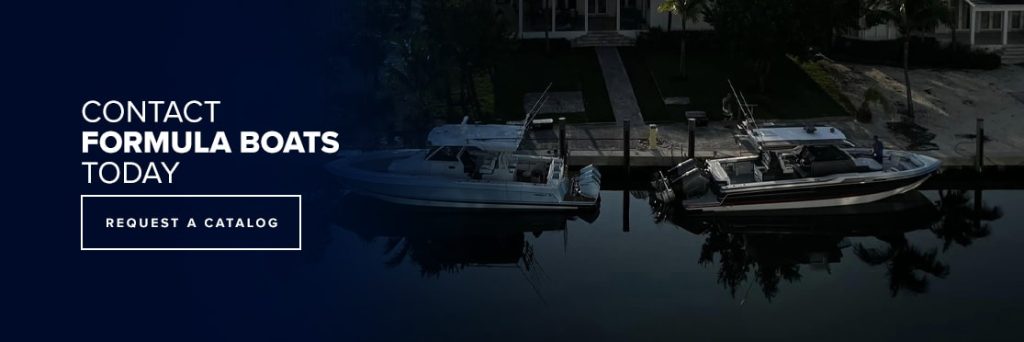
Contact Formula Boats Today
At Formula Boats, we’re dedicated to providing customers with the best boating adventures possible. We offer a premier selection of boat models that can meet a wide range of needs. We use superior structural technology to deliver smooth rides and long-lasting performance .
You can also use our building tool to develop the perfect design for your boating goals. Our interactive tool guides you through each step of the process, and our dedicated team can help with any questions along the way.
To get started with Formula Boats, find a dealer near you or contact us today.
Contact Dealer
This site is protected by reCAPTCHA and the Google Privacy Policy and Terms of Service apply

Home » Blog » Sail » Sailing at night: tactics and tips
Sailing at night: tactics and tips
By Author Fiona McGlynn
Posted on Last updated: December 2, 2021
As an early-to-bed person, I find a night passage offers special and sublime opportunities for stargazing, precious alone time, and quiet contemplation. However, I’ve also found myself wet, cold, and not-so-quietly contemplating the lights of a ship bearing down on us. Does that tanker see us? Fortunately, after 3,000 nautical miles of trial and error while sailing from Canada to Mexico, my partner, Robin, and I have learned a few tricks that make night passages more comfortable and serene.

Feed the crew
Good hot food makes all the difference in keeping energy (and spirits) up on a night passage, especially when very little cooking is involved.
Minimize galley time – It takes three days for most sailors to get their sea legs, so we like to have no- to low-effort meals and snacks planned for those first days at sea. Less time spent in the galley also means we have more time for the boat, rest, and sleeping. To minimize galley time, we prepare all our food for the first 24 hours at sea ahead of time. One of our go-to evening meals is soup, made in advance and kept warm in a thermos on deck. After the first 24 hours, quick-to-make meals (canned soup, beans on toast, curry in a bag) are a good bet.
Splurge on fun treats – We stock a “sin bin” with trail mix, chips, and chocolate and also prepare some of our favorite nibbles (muffins, scones, cinnamon buns). Milk chocolate is good for a jolt of energy, but doesn’t keep us up past our watches.

Stay hydrated
Water is very important for keeping the mind alert on night watch. In fact, dehydration is often mistaken for fatigue.
Keep a water bottle on deck – One of our friends has a rule that anyone who yawns on the boat must take a drink of water. Every member of the crew should keep a water bottle on deck when on watch. As well as making water accessible, this is a good way to monitor intake.
Serve warm drinks – One of our favorite hot drinks is Chai tea, kept in a thermos in the cockpit. We make it by adding an inch of fresh ginger to three cups of water, bringing it to a boil, and then adding cardamom, honey, and black pepper to taste. The spices and honey give us a boost without the diuretic and stimulating effects of caffeine. Cider (the soft kind!), tea, and hot chocolate are great too.
Sleep, glorious sleep
Sleep can feel scarce when sailing overnight, but we take steps to manage it.
Sleep before leaving – First, we make sure we’re well rested before we leave. We never start a passage with a sleep deficit.
A workable watch schedule – Sailors use many different watch schedules and tailor them to the number of crew on board. To find out what works best for us, we started with shorter watches (of perhaps 1 to 2 hours) and increased the length over time. We usually sail with just the two of us (plus autopilot) and find 3-hour watches work well, but on many occasions we’ve gone to shorter watches because one of us was not able to stay alert for the full 3 hours. If you’re hand steering, definitely err on the side of shorter watches. And when you feel like you can’t keep your eyes open, it is always better to wake your partner than risk snoozing at the wheel.
Avoid alcohol and stimulants – One of the principal ways we improve the quantity and quality of our sleep on board is to avoid alcohol, caffeine, and other stimulating drugs. The half-life of caffeine is 4 to 6 hours in humans, so the chances are, someone who drinks a cup of tea at the beginning of a 3-hour watch will still be feeling the effects at the end of it. When this happens, it’s then tempting to use alcohol or sleeping pills to get to sleep. Alcohol has been proven to reduce the quality of sleep. The result is waking up feeling more tired and feeling the need for more coffee, and thus the vicious loop repeats.
Try light sleep aids – One sleep aid to consider using is the seasickness medication Gravol. Someone already taking Gravol for seasickness might consider timing the dose at one-half hour before the end of a night watch. This gives the Gravol time to kick in, aiding sleep at just the right time. By the time the off-watch is over, the Gravol has been partially processed and, you hope, the effect is less drowsiness and no seasickness. For those not taking Gravol, a cup of chamomile or valerian tea half an hour before the end of their watch will help sleep come more quickly.
Get comfy – We made sure we had a safe and comfortable sea berth by setting up a snug leecloth on a berth close to the boat’s center of gravity, where the the off-watch sleeper would feel the least motion (see “ Make your own Leecloth ,” January 2017). Earplugs and an eye mask help reduce stimuli to further aid sleep.
Staying awake
Staying awake on night watch can be difficult, but we engage in a number of activities to help us keep our eyes open.
Stay occupied – If we don’t keep ourselves lightly occupied on night watch, we find it difficult to stay awake, so we create watch routines that keep us focused and alert. Filling out our ship’s log is one such task. I’ve learned that one of the most effective things I can do to avoid dropping off is to keep my brain engaged in some light listening (podcasts, music, audiobooks) through a single earbud. This keeps me awake while I scan the horizon and listen for any changes in the boat or environment. If you’re in need of something to listen to, check out the salty audiobooks at Audioseastories.com , GoodOld Boat’s online store.
Keep moving – When I get overly drowsy, I stand up and dance in the cockpit. Though I might look ridiculous, it gets the blood moving and keeps me sharp a bit longer. If dancing is not your thing, stretching or jogging in place also works.
Set alarms – When I find I’m feeling a bit droopy-eyed, I set a wristwatch alarm to go off every 10 minutes, just to catch me in case I do accidentally doze off. Of course, if I do fall asleep, I realize as soon as I wake that my best option is to wake someone else to take the watch.
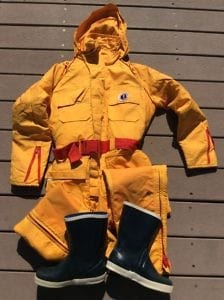
What to wear
It’s hard for me to appreciate the beautiful starlit sky when I have wet feet. I prefer to stay warm and dry.
Rubber boots and foulies –My favorite piece of gear is a 1980s yellow Mustang survival suit I picked up in a thrift store. While higher-tech options are available, I love my survival suit because it’s like wearing a giant sleeping bag on deck. I have foulies (foul weather gear), too, which are great for more active sailing, but when I’m hunkered down in the cockpit all night, my chief concern is staying warm. The other great thing about the survival suit is that I stay warm even if it gets wet. I once took a wave down the back of my survival suit and, though wet, I was warm again in less than a minute.
Buy some bum padding – Deck cushions can get in the way while sailing, so we usually stow them. I sometimes wear a pair of padded cycling shorts under my foulies to provide some insulation from the hard, cold cockpit seats.
No cotton garments! – Or atleast don’t wear them on chilly nights. When the least bit damp, cotton can get cold and clammy. We choose wool, polyester, and other technical fabrics for layering as they don’t hold moisture against the skin.
Clip in – A tether and harness are musts for enjoyment and comfort while sailing at night. We much prefer the view of the ocean from the boat than the boat from the ocean. Plus, the off-watch rests easier knowing the on-watch is tethered safely to the boat.
Warding off the green
Perhaps the number-one thing we do to ensure our comfort while afloat is avoid getting seasick. Many remedies are available, including Gravol, Dramamine, Transderm-V patch, ginger, and acupressure wrist bands. We try any drug or remedy on dry land before taking it while sailing, just in case we experience a negative side effect. One seasickness medication on the market made my vision blurry. Once you’ve found something that works for you, start taking it at least 12 hours before setting sail so it has time to properly kick in. We are often helped by spending a couple of nights in a slightly rolly anchorage before heading out.
Bits and bytes – Two pieces of technology are a boon for any sailor venturing out under the cover of darkness.
Autopilot – An autopilot helps minimize crew fatigue. Handsteering becomes far more challenging and tiring at night, when limited visibility can affect orientation. An autopilot allows for longer and more restful watches.
AIS – If you have it, AIS is a terrific additional source of information at night. It’s a great comfort to know the course and speed of the twinkly bright lights bearing down on us in the darkness. We can easily hail the vessel in question, by its name, if that’s listed on the AIS target, or by private hailing its MMSI number using the DSC-enabled VHF. Once in contact, we ask whether they can see our boat and whether they plan to alter course in the near future. We like to set our AIS alarm so we don’t miss any vessels that will approach within 2 nautical miles.
Passage planning
The decisions we make before leaving the dock undoubtedly have the greatest impact on the comfort of our night sail.
Choosing a weather window – Poor weather and sea conditions become considerably less fun in the dark, so we plan around adverse weather. We avoid night passages when the swell period (in seconds) and height (in feet) are close in number. For example, a 7-foot swell with a 12-second period will be a lot more comfortable than a 7-foot swell with a 7-second period.
Sail in your comfort zone – If you’re comfortable sailing in up to 20 knots of wind, limit overnight passages to wind conditions of 15 knots or less. Conditions can feel a lot bigger at night and so we do not push ourselves past our comfort limits, and we sleep better as a result.
Use the full moon – We’re much more comfortable on night passages when the moon is full or nearly full. All that light makes it easier to spot obstacles and we’re psychologically more at ease when we are able to see our surroundings.
Leave and arrive in daylight – The approaches to many ocean ports are littered with crab traps, long-lines,dead-heads, kelp, and other debris. We prefer to heave-to for a couple of hours rather than risk fouling our propeller attempting an entrance in the dead of night.
Passages of manageable length – If you’re new to sailing at night, it’s a good idea to slowly build up to longer and longer sails. As you start planning multi-night voyages, think about the best way to break the passages down. Many solo sailors we know choose to never sail more than one night at a time so they can pull in and have rest days after each night passage. Personally, we like trips that are three days or longer, because we find it takes that long to adjust our sleeping patterns. Experiment with different passage lengths until you find a style that leaves you feeling rested.
Strategies for sailing at night
Whether we feel safe and comfortable at night has a lot to do with how we set our sails. Proper planning makes the difference between restful slumber and a sleepless night for the whole crew.
Prepare before dark – We complete the necessary tasks —like setting the sails and organizing the cockpit — in daylight so the crew on night watch has fewer things to focus on.
Brighten up – To avoid things that go bump in the night, invest in some good lighting. We were sailing down the Mexican coast and noticed a large trawler tailing us. We tried to radio the trawler only to realize that it was our buddy-boater, Jim, who had cunningly invested in high-wattage lights that made his 35-foot sloop appear to be a much larger vessel. We’ve found red lights and headlamps help us to get around the boat without impairing our night vision.
Set sails for comfort – We don’t sleep well with a slamming mainsail on a rolling boat. We play with different sail plans and courses to make our boat as comfortable and quiet as possible. We use a boom preventer , for example, to reduce the motion and noise of the mainsail. When sailing dead downwind makes things very rolly, we’ll head up a bit for a smoother ride. Our VMG (velocity made good) might suffer, but that’s preferable to having a tired crew. When we’re dealing with light and variable wind at night, we find it well worth the extra fuel cost to run the engine, so the person below can get some sleep.
Slow down at night – We usually take in a reef before dark. We might lose some speed, but our boat is a lot more manageable if the wind picks up later — and we don’t have to put in that reef at night.
Schedule maneuvers – When possible, we plan our maneuvers, such as tacking and gybing, so we can do them before it gets dark. We schedule them for watch changes to minimize the number of times we need to wake someone mid-sleep for help on deck.
By adopting these strategies, we’ve begun to really enjoy sailing at night. In fact, we’re finding now that we even prefer it, because it means we don’t lose a day of shore time upon arrival in a new port. With the right preparation, you can make nights at sea not only pleasant, but also special and beautiful times. So make things comfortable for yourself, try some tips to see what works best for you, and then sit back and enjoy the stars.
Originally published in Good Old Boat magazine in March/April 2017. For more great how-tos and DIY subscribe to Good Old Boat magazine using this exclusive Waterborne promo code .
Fiona McGlynn is an award-winning boating writer who created Waterborne as a place to learn about living aboard and traveling the world by sailboat. She has written for boating magazines including BoatUS, SAIL, Cruising World, and Good Old Boat. She’s also a contributing editor at Good Old Boat and BoatUS Magazine. In 2017, Fiona and her husband completed a 3-year, 13,000-mile voyage from Vancouver to Mexico to Australia on their 35-foot sailboat.
Monday 7th of December 2020
try Tradional Medicines Ginger Aid Tea. Make Thermos and keep it handy when some one starts to feel queazy have them sip a cup or two of warm Ginger Aid tea. Helps settle the stomach and keeps you warm a win win.
Sunday 3rd of June 2018
While I also do just about everything mentioned in the article, as a singlehander, there are no crew changes, so making sure hot drinks (I like decaf Irish Breakfast tea with a couple of cinnamon sticks thrown in) and light snacks are within reach of the cockpit are very important. I also added glow in the dark draft strips to my sails and I've added glow in the dark stickers to the stanchion bases. I love night sailing—it's almost a religious experience being out there, sailing in calm seas under a full moon and a sea of stars above. One word of warning though, if you're new to astronomy, don't be surprised if that North Star you've been following turns out to be the 9:40 flight from Chicago...just saying.
Friday 16th of June 2017
Good article.
The very best, THE VERY BEST, anti seasick remedy for me has been Motion Ease, sold at West Marine and Walmart. After many remedies were tried and were unsuccessful, Motion Ease was the first remedy that I found successful. We were in 38+knots of wind between Nassau and Eleuthra and the cook brought sandwich "fixins" into the cockpit. I was already seasick and could only manage a slice of bread and cheese wadded up in my fist. My wife remembered I had bought Motion Ease several years before but I had never tried it. She went below and brought up the tiny bottle. I rubbed one drop behind each ear and within 15 minutes I was eating a Dagwood sandwich! The remedy is applied to the skin area behind each ear and works even if you are already seasick. About $5 at Walmart, maybe more at West Marine.
Friday 30th of June 2017
Thanks for the recommendation Jim! I've never tried Motion Ease but will definitely give it a go now.
Terms and Conditions - Privacy Policy
Yachting Monthly
- Digital edition

How to tackle a night passage short-handed
- Tom Cunliffe
- November 27, 2014
Worried about ‘things that go bump in the night’? Tom Cunliffe says night sailing is easier than you think – and an amazing experience

Tom Cunliffe is a Yachtmaster examiner. He has sailed tens of thousands of miles around the world, thousands of them at night
My neighbour Jack is a very competent yachtsman. He sails the boat better than most and his understanding of what goes on in the wires and pistons departments outstrips my own. He makes passages with his motivated wife and two young daughters. They’re all well on-side, yet they can’t bring themselves to expand the range of their two-week summer cruise beyond the reach of daylight. An ‘overnighter’ in Jack’s Hallberg-Rassy would give them an extra hundred miles easily. What’s more, with everyone involved, the family would feel terrific about their achievement.

At close range you’re more visable with running lights. A tricolor can be difficult to spot.
If your experience is similar, you’re in good company. Respect for darkness is primitive. The hairy mammoth herds outside our caves have thinned out a bit these days, but there are still holes in blacked-out roads and muggers working the back streets at closing time. Most of us have long grown out of the child’s fear of the dark, yet a bit of it still remains deep down. Accepting this and tackling it head-on is a start. The rest is a matter of coming to terms with the idea of driving down an unlit motorway with no headlights and dealing with not turning in at bed-time and getting up for breakfast.
On a single night, the sleep issue isn’t a big one, and when did you last run into something out at sea in daylight? Never, probably. The oceans don’t suddenly become littered with debris after dark, and navigation built around GPS is largely the same as it was before sunset. On a calm night, the sheer magic can take some beating. Stars like you never saw before, the watch coming up at midnight with a mug of tea and the occasional ship passing on the horizon, manned by whom, and bound for where? Dawn, a landfall, excited kids popping up from their safe little bunks, and the smell of bacon on the breeze. You can’t beat it!

A night passage can create some of your most magical sailing memories
One night passage Last mid-summer, my wife and I had crossed Lyme Bay bound west, hoping to anchor in the Isles of Scilly in time for lunch the following day. We’d passed Salcombe in the afternoon but we weren’t going to make the Lizard in time for the evening tide. I didn’t fancy the headland on a foul stream in darkness, so we shortened down so as to arrive with the west-going early in the morning. When I turned in, we were logging 3 knots as the sun set over Cornwall.
With so little canvas, stress levels were low and I lay in my bunk peacefully dreaming of luggers drifting for pilchards and girls looking seaward on the beach at Cadgwith. At one o’clock, I came up to find the boat tiptoeing through a sea of phosphorescence. Above me, the moonless night was alive with slowly wheeling stars so dense they seemed to recede into infinity. On the southern horizon, Scorpio took a rare bow while, ahead of me, the Lizard light swept the sky. Then came the unmistakable snort of a close-up dolphin. A small pod was playing around the boat like silver ghosts, darting under the keel then cutting the surface for air. They stayed until dawn had rubbed out the stars and the low headland of the Lizard had firmed up on the bow. I called Ros at 0430 and together we swept into Mount’s Bay on the first of the big ebb that would carry us to Tresco.

Avoid hazards with sensible seamanship Fishing pots Unpredictable and unlit, these are the biggest danger at night. Avoiding them is largely a matter of common sense. Sometimes they are laid in deep water, but mostly they lurk in less than 50 metres. Avoid shallows if you can, especially near fishing harbours, and inside passages around headlands, even if you are confident of your position thanks to radar and plotter. Even if you know where you are, there’s still the same risk of the engine stopping with a crunch, or finding yourself moored by the rudder in a strong tide.
Harbour entrances RYA courses tend to encourage night entries. My feeling is that to enter a strange harbour at night, unless pressed by imminent heavy weather or some other extraneous force, is generally a thoroughly bad idea. I remember as a young skipper sailing into Bilbao, never having seen the place in daylight and confident that my charts were up to date. I didn’t know that someone had placed a large, unlit obstruction just inside the breakwater between the lighthouse and my most likely set of pontoons. I survived, but it was a close-run thing. On another occasion I entered the anchorage in Anguilla only to find it full of large, dark shapes. I anchored well out. The morning revealed them as wrecks from a hurricane that had given us a bit of a dusting out at sea. In other words, you never know what you’ll find, so arrive in daylight if you can.
Light pollution If you do find yourself planning close-in night pilotage, be aware of light pollution. A nice fat buoy may be sited bang in front of a funfair. Napoleon said his enemies lost battles because ‘they made pictures’ – torturing the hard facts until they saw what they wanted to see. Many a navigator has come unstuck for committing the same sin. Old hands will recall a cartoon featuring an oilskinned man in a cockpit peering through binoculars and announcing something along the lines of, ‘I say, Henry, your red buoy seems to be advertising Toby Ales. The white beacon is hanging outside the gents.’

It’s impossible to see a liner’s nav lights at sea. AIS and radar will help
Poorly lit craft Yachts: Inshore, yachts can be hard to spot. I have had narrow squeaks coming into places like Portsmouth with strong background lighting and a tight channel for leisure craft. Yachts are especially awkward if they opt for a tricolour at the masthead instead of proper running lights in close quarters. You are looking ahead for trouble, not up in the sky! Tricolours are great on passage, though, increasing your likelihood of being spotted and minimising power drain.
Fishing boats: These are notorious for being poorly lit and for having their navigation lights obscured by blazing deck floods. Watch them closely and expect erratic course changes. Don’t get too close!
Liners and ferries: Cruise ships and ferries are invariably lit up like Oxford Street on Christmas Eve. It’s hard to pick out the red and green amongst the fairy lights, so take time to work out what they’re up to and consult AIS if you have it.
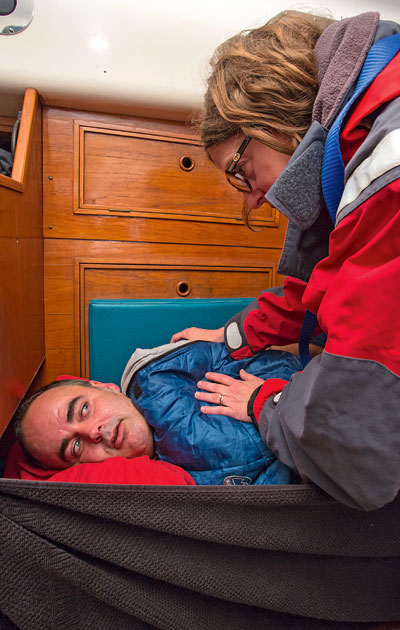
On-watch crew must understand that if they are in any doubt about a situation on deck, wake the skipper. It’s always the right thing to do
Keeping watch and sleeping.
System or no system? For one night with two watch keepers and assuming the skipper is the decision-maker, he or she will need to be up at any ‘pinch points’ – shipping lanes, landfalls, headlands and so on. If the night includes a lot of these, such as crossing the southern North Sea, it may be better to run on a casual basis with the skipper taking the tricky bits and the mate backing up in between. If the passage is less demanding, a simple watch system will certainly be favoured, with pre-planned ‘skipper hours’.
Simple is best When a watch system is appropriate, my wife and I operate like this: Fair weather – we break the theoretical 12-hour night up into four and work it three hours on, three off. That’s enough to grab some useful sleep but not so long that the watch on deck starts nodding off. During the nominal daylight hours we rest according to needs and conscience. We arrive in good shape. Bad weather – Two on, two off. Really bad weather – one-hour watches, and hang on. We can stand anything for a single night.
Night orders For a partnership or a couple of old chums, written orders aren’t usually necessary, but if there’s any doubt, it’s a sound idea. These include courses to steer, any anticipated alterations and, most importantly, when to call the skipper, for anything from a change in the weather to a possible close-quarters situation with another vessel. The vital thing is not to be afraid to call. No skipper sleeps well if there’s any concern about this.

Near the centre of gravity, a good sea berth has a reading light and stout lee cloth
Pick a proper sea berth I used to drive a race boat where my only hope of sleep was to crash out on top of the sail bags under the cockpit. I also delivered a supposedly serious cruising yacht to the Mediterranean with a crew of four. Two of the hands coped in the forecabin with a sheet of plywood jammed down the middle of the vee-berth to stop them rolling into one another. The lady among us selected the aft cabin, which boasted a fine island double bunk. Sadly, this proved a vanity of Biblical proportions and she ended up making a nest of duvets and sleeping bags on the cabin sole. As for me, I camped on the saloon floor under the table, sleeping on… sail bags again!
This just won’t do on a family boat. If your yacht has no sea berths, sell her to the unsuspecting and buy one that does. Sea-berths must have lee cloths or boards, and be aft or near the middle of the boat, low down to minimise motion. A decent reading light is vital. If sleep won’t come, it is important to take your mind away from the action.

Some decent grub will fill a gap and keep you going throug the dark hours
Good food to see you through For a one-night passage there’s much to be said for preparing an evening meal before you let go the dock lines. Make it eatable from a bowl. A simple stew will taste great. Put the spuds in early too, so all you have to do is heat up a single pan. More ambitious gourmets may prefer a spicy chilli, but this will require the chef to come up with some rice on passage. Whatever you choose, make enough of it that you won’t manage to finish it at dinner. The remainder can stay in the pan, minimising washing up and giving the watch the luxury of warming it up for a bowl-full at midnight. It passes the time and fills the gap.

Two of nature’s imcomparable glories – the sunrise and sizzling bacon
Be sure to stow the makings of a proper breakfast. Just the anticipation of a crispy bacon sandwich can keep a man going through that often-bleak period after dawn and before sunrise. If it’s looking like it’s going to be a rough passage, knock up some filled rolls while you still can, and be sure the greedy box is well stocked with all the fat-boy food you can conjure up. Hot drinks are axiomatic. Boiling a kettle and having somewhere safe to place a mug while you serve a ‘Cupasoup’ or an instant coffee has to be easy. If it isn’t and you are reduced to pre-heating thermos flasks, there is something wrong with your boat or your arrangements. Keep the drinks coming. They maintain morale and give people something to do.

If you see something you’re not sure about, grab the binoculars and take a closer look
Safety on watch Wear a lifejacket if you feel the need, if it makes you feel safer, but don’t feel obliged to do so in fair weather, provided you stay in the cockpit. The harness tether is the thing, and if this comes as part of the lifer, so much the better. In that case, you’re covered all ends up.
It’s not always easy to force discipline on yourself, but it really does make sense to call your mate if you’re going to have to climb out of the cockpit and up on deck. Gents are well advised to use the heads for jobs big and small when alone on watch at night. Using the great outdoors may be OK in flat calm, but if you’re motoring along at 6 knots under autopilot when things go wrong and you take a dive after deciding not to bother with your harness, your mate will have a long way to come back.
I asked my wife what I might add about safety on watch. Her reply was interesting. ‘Use binoculars,’ she replied. ‘Is that safety or just good practice?’ I enquired. Her reply says it all. ‘I didn’t know there was any difference.’ Safety is not about buying things. It is about an attitude of mind. We must constantly be on the lookout for trouble at night so that we can forestall it, just as we do in the daytime.
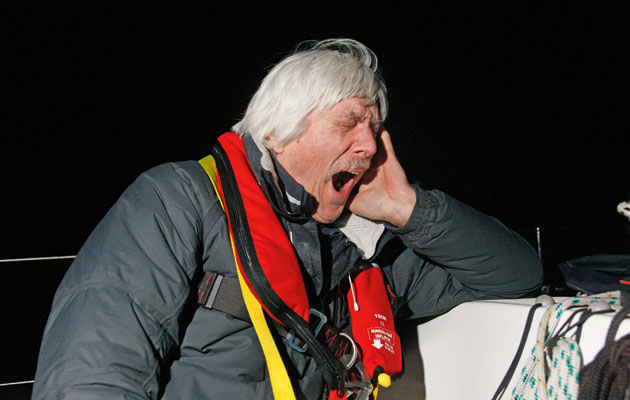
We’re not designed to stay up all night. Sit around and you will succumb
Staying awake Our daily lives aren’t set up for sleeping in short chunks then keeping awake for half the night. Given a longer trip, it’s surprising how well most people adapt, but a one-nighter is more of a sprint than an endurance race, so we must take what sleep is offered. A few hours’ rest will do us fine. There will be a grey period around dawn when we wonder why we bothered, but when the sun comes up, all is forgotten.
Assuming you have an autopilot or the boat can be persuaded to steer herself for a while, keeping a three-hour watch in decent weather is not onerous. Don’t sit in the cockpit thinking about your overdraft. Move around. Scrutinise the horizon first. If there’s no shipping, pop down below and put on the kettle. Stick your head out at least every five minutes to make sure nothing has changed, then make your tea. Drink it on deck and look around again.

Tea and a biscuit under a majestic roof fretted with golden fire
My watch always goes quickly. I read the radar, check the course made good, fill in the hourly log with a bit of an essay on the side, make a meal at half-time (heat up last night’s chilli), consider the stars in their courses, come back to earth watching the ships and fishing boats trying to run me down, and finally brewing up for my wife who sensibly won’t come out from her duvet without a fresh cup made with lemon. Then it’s back to the bunk, snooze off and wait for the bacon.

Night palette or not, some instruments’ backlighting is just too much
Look after your night vision Allowing the eyes to accommodate to the night takes a little time. I’ve heard that this is a quarter-hour but I can’t say I’ve noticed. One thing that may help is this: apparently, the irises of our eyes operate independently. If you have established good night vision on deck and must go below into light, shut one eye and keep it closed. When you come back up again, open it and that one will have retained much of its ability to see in the dark. The other will catch up in its own time. Down below, I always kept one oil lamp burning low. This gave me all the light I need to brew up or fill in the log book without dazzling. Today, a modern LED dimmed down does the same. Turn down the backlight on all plotter screens, radars and on-deck instruments. I don’t bother with so-called night palettes. They don’t work for me.
A masthead tricolour is great under sail out at sea because it doesn’t shine back off the pulpit as most running lights do. I turn the cockpit instruments off sometimes because they kill the view even at minimum backlight setting. I don’t need all that data most of the time, just the friendly old compass with its tiny light.

A clear halo around the moon indicates there’s a front approaching. Best crack on
Night’s influence on the weather My old pal Frank Singleton, author of Reeds Weather Handbook and a proper professional when it comes to weather, sent me the following ideas about weather at night. All air usually cools at night, even over the sea. This will be more obvious when it has been a sunny day not far from land. The result is that there are fewer gusts and a decrease in the average wind strength.
On a night with low-lying cloud or hill fog, some lighthouses will not be visible. Note the height of the lantern from the chart and be ready for the occasional disappointment. Haloes around the moon can be really obvious at night. A big one is usually a sure sign of an approaching front. If the wind is light, think about starting the engine and keeping up boatspeed. In conditions when the air is moist, a degree or so of cooling after dark might be just enough to shut down poor-to-moderate visibility into mist or even fog. Distant lightning is more easily seen at night, so don’t be too alarmed if you see it flashing around the horizon.

Some feel uneasy about sailing into the sunset and beyond but it’s not difficult amd the experience in unforgettable
READ TOM’S TEN TOP TIPS FOR NIGHT SAILING HERE.
Enjoyed reading this?
A subscription to Yachting Monthly magazine costs around 40% less than the cover price .
Print and digital editions are available through Magazines Direct – where you can also find the latest deals .
YM is packed with information to help you get the most from your time on the water.
- Take your seamanship to the next level with tips, advice and skills from our experts
- Impartial in-depth reviews of the latest yachts and equipment
- Cruising guides to help you reach those dream destinations
Follow us on Facebook , Twitter and Instagram.
How To Boat At Night Safely
Boating at night can be enjoyable and relaxing to do. However, it is very important that boaters are safe and take care when boating after dark.
Boaters should know the navigation rules and boat safety requirements when boating at night.
To boat at night safely:
- Abide by night boating rules set out by the U.S. Coast Guard
- Ensure the boat equipment is working
- Understand & abide by the right of way rules when boating at night
- Adhere to boat safety rules
- Bring an extra passenger for lookout duties
Following these steps will ensure that boaters are in the best and most prepared position when going on a boat trip at night.
1. Abide By The Night Boating Rules Set Out By The U.S. Coast Guard
The first step to boating at night safely is to abide by the night boating rules set out by the U.S. Coast Guard or an equivalent official body in your country.
From the U.S. Coast Guard federal requirements for recreational boaters, the U.S. coast guard night boating rules are:
- All vessels under 164ft. in length must have a 360° shine all-around white anchor light that can be seen from all directions. This white anchor light should be placed at the top of a mast on a sailboat or on the roof of a power boat and it must be clearly visible with no obstruction to its visibility
- All vessels under 164ft. in length must have a portside red light and a starboard green light with a shine from dead ahead to 112.5° aft on either side. They must have a white stern light that shines aft and 67.5° forward. The red, white and green lights must be clearly visible with no obstruction to their visibility
- Visual distress signals must be carried onboard all vessels regardless of size at night including 3 U.S. coastguard approved pyrotechnic devices e.g. red flares, orange smoke signals or parachute flares and 1 U.S. coast guard approved non-pyrotechnic device e.g. high-intensity electric distress flashlight
- All recreational vessels must carry one wearable U.S. coast guard approved life jacket for each person on board. Any boat 16 feet or longer must also carry one throwable U.S. coast guard approved flotation device
- Hand-portable, U.S. Coast Guard-approved B-I or B-II classified fire extinguishers are required with a mounting bracket onboard boats. For boats less than 26 feet, one B-I fire extinguisher is required onboard, two B-I fire extinguishers or one B-II fire extinguisher are required onboard boats between 26 ft. and less than 40ft. and three B-I fire extinguishers are required on boats between 40 feet and 60ft.
Ensuring a boat complies with these rules means a boater is safely abiding by the U.S. coast guard rules for night boating and can safely and legally boat at night.
To meet the U.S. coast guard rules for night boating, ensure your boat has the correct lights, the right visual distress signal devices, fire extinguishers, and the required amount of personal flotation devices.
2. Ensure The Boating Equipment Is Working Properly
The second step to boating at night safely is to ensure all the boating equipment is working correctly.
To ensure the boating equipment is working when boating at night:
- Check the life jackets and personal flotation devices are working, fit perfectly on every person's body, and that there is no damage to them
- Ensure the red, white and green navigation lights on the boat are in full working order, are shining bright and there are no obstructions blocking the lights from view. If the lights are not working, replace the bulbs and fix all the lights before setting out on the water
- Ensure the deck and dock lights on the boat are working properly and they provide the correct amount of visibility in the dark
- Check the boat's fire extinguishers are all working and are mounted in an easily accessible area on the boat
- Assess the boat's navigational instruments like GPS, radars & chart plotters to ensure they are in full working order. Ensure the display brightness of these navigational instruments are perfect for boaters to clearly see and view in the dark and make sure they are providing the correct location readings so you can trust them when out boating at night
- Ensure the boat's engine starts and runs without any issues. Start the engine in the dock and let it sit idle for 2-3 minutes to see if there are any warning lights or engine misfire issues
- Check that all the boat's interior lights are working and replace the bulbs of any interior lights that are not working
Ensuring the boating equipment is in full working order should be done before going on a boating trip. It should not be done while out on the water after the boat has left the marina or harbor.
3. Understand & Abide By The Right Of Way Rules When Boating At Night
The third step to boating at night safely is to understand and abide by the right-of-way rules when boating at night.
These right-of-way rules explain how to safely pass a boat at night.
Below are different scenarios a boater will encounter when boating at night and what to do in these scenarios.
A Boater Sees A Boat Ahead With Green And White Lights
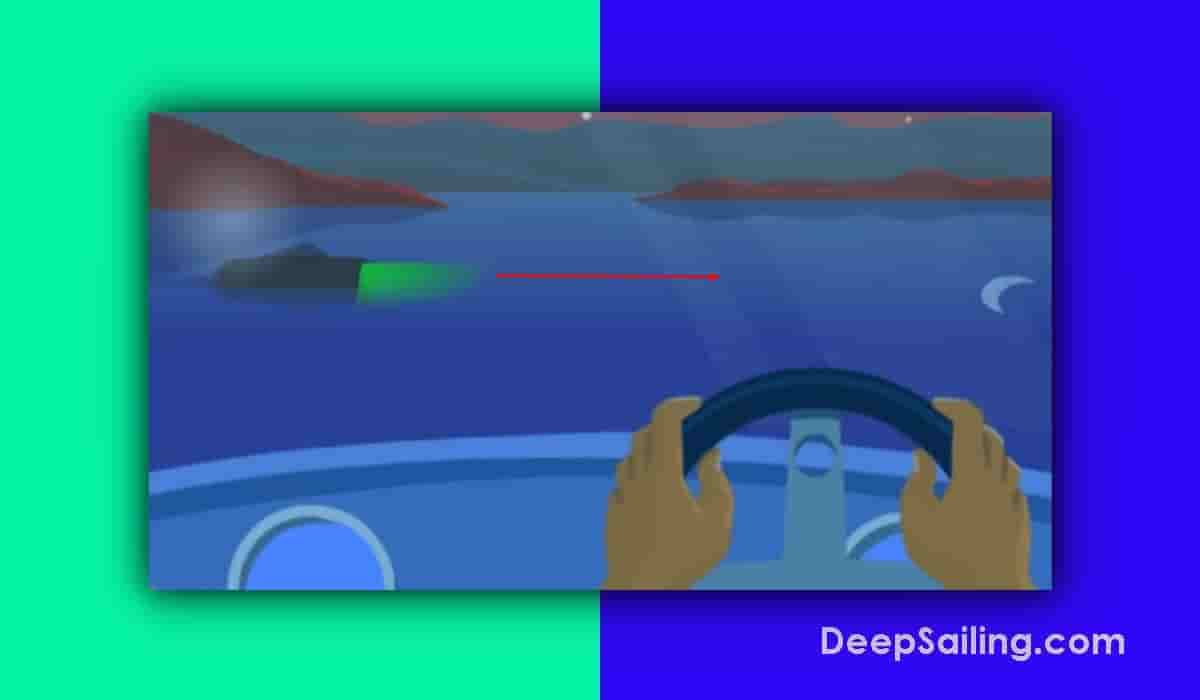
When boating at night, if you see another boat in front of you with a green and white light, it means the boat is crossing your path from the port side i.e. the boat is crossing your path from left to right.
In the scenario of seeing a boat with green and white lights ahead, you can maintain your course as this other vessel has to stop and give you the right of way.
However, still remain cautious in case the other vessel may not have seen you.
Put simply, if a boat is approaching your path from the left (port side), you have the right of way and the other vessel has to give way to you.
A Boater Sees A Boat Ahead With Red And White Lights

When boating at night, if you see another boat in front of you with a red and white light, it means the boat is crossing your path from the starboard side i.e. the boat is crossing your path from right to left.
In the scenario of seeing a boat with red and white lights ahead, you must slow down and stop to give the right of way to the other vessel. Remain slowed down or stopped until the other vessel passes your path and the path is now clear.
Put simply, if a boat is approaching your path from the right (the starboard side), this boat has the right of way and you must give way to them.
A Boater Sees A Boat Ahead With A Single White Light
When boating at night, if you see another boat in front of you with a single white light, it means the boat is at anchor or moving away from you in the same direction.
In the scenario of seeing a boat with a single white light ahead, you must slow down to avoid a collision or prepare to overtake the vessel on either side of the boat.
4. Adhere To Boat Safety Rules
The fourth step to boating at night safely is to adhere to common boat safety rules.
Boat safety rules to follow when boating at night includes:
- Wear a life jacket : As per U.S. coast guard rules, every person onboard a boat must wear a U.S. coast guard approved life jacket. Ensure every person is wearing a life jacket when boating at night
- Have fully functional fire extinguishers onboard : Make sure the fire extinguishers are operational and easily accessible in the event of a fire onboard at night
- Reduce boat speed at night : When boating at night, reduce your speed as the visibility is reduced at night. It can be hard to see debris or other boats at night so reducing the speed can help with this. It's recommended to travel slower than any boat speed limits
- Reduce the noise onboard : When boating at night, keep noise to a minimum. Keeping noise to a minimum ensures you can hear other boats approaching that you may not have seen. Playing music through speakers is not advised at night and keeping the rpm of the engine down to approximately 2,000 rpm or lower will help reduce the noise
- Don't use dock lights when out on the water : Dock lights should only be used when docking a boat in the harbor or marina and they should not be used when out boating at night. Using dock lights when out on the water at night can cause temporary blindness for other boaters and it is not recommended
- Bring waterproof jackets onboard at night : Sometimes the temperature can get very cold at night. To help with this, a boater should bring a waterproof jacket to keep them warm and dry when boating at night
- Follow the boat's navigational instruments at night : Follow the navigational instruments when boating at night. A navigational instrument will help inform you of other boater's locations and potential dangers on the water
Following and adhering to these marine safety rules will help boaters to safely navigate the waters when boating at night.
5. Bring An Extra Passenger For Lookout Duties
The fifth step to boating at night safely is to bring an extra passenger on the night boat trip for lookout duties.
An extra passenger onboard at night will help keep a lookout for other boats that a captain/skipper may not be able to see.
An extra passenger can keep a 360° lookout while a boat captain is focusing on navigational instruments.
Ideally, bring an adult over 18 years with good eyesight onboard for the lookout duties.
Boating A Night Safety Checklist
Before boating at night, a boater should follow a night boating safety checklist to ensure a safe boat trip at night.
Below is a boating at night safety checklist.
Frequently Asked Questions About Boating At Night
Below are commonly asked questions about boating at night.
What Color Are The Lights Of A Boat At Night?
The colors of the lights on a boat at night are red, green and white.
What Boat Lights Do You Need On A Boat At Night?
There are four lights needed on a boat when boating at night which are a red light on the port side of the vessel, a green light on the starboard side of the vessel, a white light at the stern of the boat, and a 360° visible white light on the highest point of a mast or roof of a boat.
How Do You Improve Your Safety When Boating At Night?
To improve your safety when boating at night, ensure all fire extinguishers and flares are operational, all the boat lights are in full working order, the life jackets are worn and tied correctly on your body, the navigation instruments are working and visible in the dark and the VHF radio is working properly.
What Are The Benefits Of Boating At Night?
The benefits of boating at night are fewer boats are on the water which means less crowded boating trips and the temperature at night tends to be much cooler which makes it more comfortable for boating in areas where the climate is hot.
What Are The Risks Of Boating At Night?
The risks of boating at night are poor visibility causing a boat collision and increased fatigue of the captain causing a lack of concentration when boating at night.
Is It Legal To Boat At Night?
Yes, it is legal to boat at night from sunset to sunrise provided the boater follows the rules and regulations set out by the U.S. Coast Guard or their own equivalent government body.
Is It Hard To Boat At Night?
No, boating at night is relatively straightforward once a boater gets some night boating experience. With more night boat trips, the boater gets more confident and it starts to become routine.
Is It Safe To Boat At Night?
Yes, it is safe to boat at night provided the boater follows the correct night boating safety procedures and ensures the weather conditions are good for nighttime boating.
If these safety procedures are followed and the weather is good, then it is safe.
When Is It Best Time To Boat At Night?
The best time to boat at night is when the weather conditions are good with clear skies and calm seas.
When Is It To Worst Time To Boat At Night?
The worst time to boat at night is when the weather is extremely foggy, there is a large amount of rain or it is very windy.
During poor weather conditions, boating at night should be avoided.
Do You Need Night Vision When Boating At Night?
No, night vision systems are not a legal requirement when boating at night. However, a night vision system can help improve a boater's visibility when night boating and many boaters find them useful to improve visibility.
What Is The Speed Limit When Boating At Night?
The speed limit when boating at night will depend on the specific states and their own marine speed limit laws.
Typically, nighttime boat speed limits range from 5 knots to 10 knots but this can vary depending on the state and the location.
Where Are The Boat Navigation Lights Located On A Boat When Boating At Night?
When boating at night, the boat navigation lights are located:
- Red light : The red light is located on the port side of the boat
- Green light : The green light is located on the starboard side of the boat
- White light : The white light is located on the top of a mast on a sailboat or on the rooftop of a power boat
What Are Boat Dock Lights?
Boat dock lights, also referred to as boat headlights, are lights on a boat that are turned on when a boat is docking in a marina or harbor. They are not used when a boat is moving on the water at night as they can temporarily blind other boaters and instead they are only turned on when a boat is mooring. The boat dock lights are located on the bow of a recreational boat.

The global authority in superyachting
- NEWSLETTERS
- Yachts Home
- The Superyacht Directory
- Yacht Reports
- Brokerage News
- The largest yachts in the world
- The Register
- Yacht Advice
- Yacht Design
- 12m to 24m yachts
- Monaco Yacht Show
- Builder Directory
- Designer Directory
- Interior Design Directory
- Naval Architect Directory
- Yachts for sale home
- Motor yachts
- Sailing yachts
- Explorer yachts
- Classic yachts
- Sale Broker Directory
- Charter Home
- Yachts for Charter
- Charter Destinations
- Charter Broker Directory
- Destinations Home
- Mediterranean
- South Pacific
- Rest of the World
- Boat Life Home
- Owners' Experiences
- Interiors Suppliers
- Owners' Club
- Captains' Club
- BOAT Showcase
- Boat Presents
- Events Home
- World Superyacht Awards
- Superyacht Design Festival
- Design and Innovation Awards
- Young Designer of the Year Award
- Artistry and Craft Awards
- Explorer Yachts Summit
- Ocean Talks
- The Ocean Awards
- BOAT Connect
- Between the bays
- Golf Invitational
- Boat Pro Home
- Pricing Plan
- Superyacht Insight
- Product Features
- Premium Content
- Testimonials
- Global Order Book
- Tenders & Equipment

The best pictures of superyachts at night
Related articles, superyacht directory.
BOAT rounds up the best photos of superyachts illuminated at night, including Nobiskrug's Sailing Yacht A , Lürssen's 111 metre Lady Gulya and AK Yachts' Victorious .
Motor Yacht A
Delivered in 2008 by Blohm & Voss and penned by legendary designer Philippe Starck , the 119 metre Motor Yacht A is one of the most famous superyachts in the world. Featuring naval architecture by Martin Francis, Motor yacht A accommodates a total of 14 guests and 35 crew inside a 5959GT interior. Here, the green underwater light display illuminates the iconic steel hull from beneath.
Perfect Lady
The first 33m Mangusta Gransport 33 superyacht, Perfect Lady , was delivered in 2020 and made its official debut at the 2020 Fort Lauderdale International Boat Show. Designed by Alberto Mancini , the superyacht features accommodation for a total of 12 guests and five crew and can reach speeds of up to 25 knots. Here, Perfect Lady's stern and twin staircases framing the tender garage are illuminated, alongside the yacht's glowing nameplate.
Taking the title as the world's largest sailing catamaran, the 44 metre Hemisphere was built by Pendennis and first delivered in 2011. Designed by Lauriot Prevost , the yacht can accommodate a total of 10 guests and eight crew inside a 499GT interior. Hemisphere also boasts an illuminated flybridge and underwater lighting.
First launched by German yard Lürssen as Tis , the 110 metre Lady Gulya is designed inside and out by London-based studio Winch Design. The massive 4699GT interior accommodates a total of 18 guests in nine staterooms. Here Lady Gulya is pictured off the coast of Juan-les-Pins France, with exterior lighting casting a golden hue on its superstructure.
Northern Sun
The 50m Narasaki superyacht Northern Sun was first launched in 1976 and accommodates a total of 12 guests in six staterooms. the popular charter yacht, which is currently listed for charter with Ocean Independence, carries with it the owner's own artwork collection, which includes nautical antiquities and rugs from around the world, as well as a bursting inventory of water toys. Here, the glowing lights of Northern Sun's interior make sure the superyacht stands out against the darkening horizon.
Launched at AK Yachts in April 2021, the 85 metre Victorious first started life fourteen years ago in Northern Chile as a 77 metre explorer. Now featuring exterior design by Michael Leach Design and interiors by H2 Yacht Design , Victorious features an upper deck complete with a sky lounge, cocktail lounge, observation saloon and dining room, a helipad at the bow and a Jacuzzi on the aft deck. In order to ease the landing of helicopters at night, eight green dots appear on the helipad while impressive underwater lighting leaps out of the steel hull.
Sailing Yacht A
One of the most famous superyachts in the world, the 142.81 metre Sailing Yacht A has been turning heads since it was delivered in 2017. Featuring a boundary-pushing design characteristic of designer Philippe Starck , the sail-assisted motor yacht has a top speed of 21 knots and has a massive 12700GT interior. Here, the instantly recognisable hull is illuminated by purple lighting from beneath the waterline.
More about this yacht
Yachts for sale, yachts for charter, more stories, most popular, from our partners, sponsored listings.
- AI Generator
4,334 Sailing Yacht Night Stock Photos & High-Res Pictures
Browse 4,334 sailing yacht night photos and images available, or start a new search to explore more photos and images..

- Articles and Guides

Sleeping on a Boat: Tips for Overnight Stays
14th jun 2023 by toi williams.

Sleeping on a boat overnight can be a fun and relaxing adventure that every boater should have a chance to experience. As the light fades, everything on and around the water changes to create a new atmosphere you can truly experience only when you're afloat. In case you can’t tell, we are total fans of the magical moment of falling asleep under the stars as we’re rocked to sleep by the gentle motion of the water.
In full disclosure, if you’re a first-timer, it will often help to know what to expect and to be prepared because, yes, it’s a different and changeable environment. These are some questions that we commonly hear, the answers to which will provide you with insights in advance for enjoying going to sleep on a boat overnight.
Where Can You Sleep on a Boat Overnight?
The short answer to this question is, almost anywhere. But you will sleep better in some places than others.
The most important thing to think about when sleeping on a boat overnight is where you park or anchor your boat while you and your companions enjoy a good night's sleep. The best places for anchoring the boat for the night will be quiet, protected areas with calm waters. This means places without a lot of night traffic, places that are sheltered from high winds, and places that are out of strong currents.
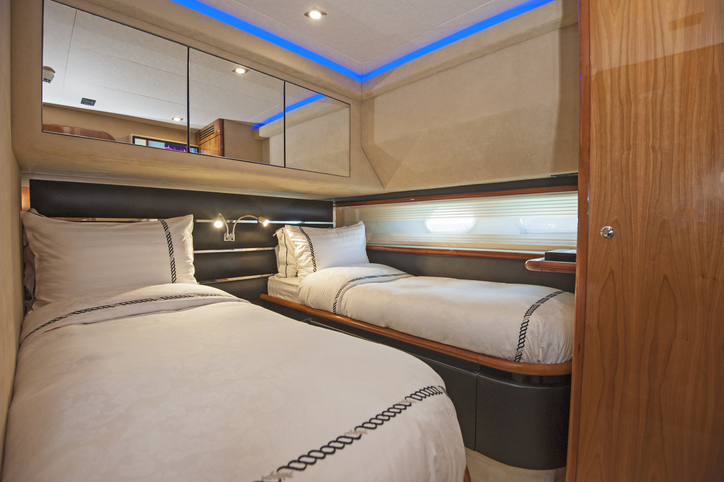
Can you anchor overnight, away from the shore?
In many areas, there are plenty of places available that are good for sleeping on a boat while attached only to an anchor. To learn where they are, use maps and charts to do your research and find the best locations in the areas to which you are navigating. Make sure you arrive at the location while there's still plenty of light left to take a good look around and spot any potential hazards, like rocks and shallow reefs, before they can cause trouble.
When sleeping on a boat, you want to ensure that your vessel stays in place during the night. When not not docked in a marina (see below), this means having a good anchor to hold the boat in place. By using charts and other available resources, you can determine the type of bottom (mud, rock, sand, etc.) where your anchor will be set and what type of anchor is best for that type of bottom. The anchor must not only be long enough to reach the bottom but also have enough length (also called scope) to set into the mud firmly.
Can you sleep on a boat in a marina?
A marina is one of the most popular locations for sleeping on a boat overnight because of the amenities and facilities available to boaters. However, marinas can have varying rules about staying on a boat overnight. In some marinas, sleeping on a boat is prohibited while others have a limit to how many days a boat can remain at anchor in the marina. Most marinas accommodate transient boaters, but check the rules ahead of time for the marina you are planning to visit to avoid any surprises.
When staying in a marina overnight and sleeping on a boat, you will want to choose a calm area with minimal distractions to upset your boat. Many marinas recommend staying in a no-wake area so that you won't have to worry about wakes or running boats during the night. The sound of the linkages between floating docks often are magnified at night, and we recommend bringing along some earplugs just in case.
An important safety note when staying in a marina is that there may be restrictions on fishing or swimming in the area due to the electricity running to the docks.
For more on marinas, read “ How to Choose the Right Marina .”

Can you sleep on a boat on the ocean?
Planning to spend the night on a yacht or other type of boat in the ocean is different than planning to sleep on a boat in a cove or at a marina. The biggest difference is that when you get tired or the sun goes down, you cannot drop anchor and go to sleep like you can in shallow water. The water is way too deep, and since the boat remains constantly in motion, you and your crew need to take turns staying on watch throughout the night to steer the boat and keep a lookout for other vessels or bad weather.
The traditional way to do this is to “stand watches,” typically for three or four hours at a time with two or more people staying awake while others sleep. It’s tiring staying awake from, say, midnight until 3am, and it may be hard to sleep on the first night as you are sailing through waves or running under engine power. After a day or two, however, everyone learns to catch up on their sleep when they are off watch during the day.
Another difference when you sleep in a boat on the ocean is that the motion of the boat in windy weather can be much more dramatic than on other bodies of water, making it harder to sleep comfortably. To avoid being tipped out of the berth during boating in rough water, set up a lee cloth or lee board for the berth before you depart on the trip so as the boat rolls, you don’t land on the cabin floor.
One tip for making a longer voyage on the ocean is to work out in advance if you are susceptible to motion sickness, and if so, to obtain from your doctor a scopalamine patch or other seasickness remedy in advance.
Can you sleep on a boat on a lake?
As with marinas and anchorages, whether or not you can sleep on a boat on a lake depends on the location. Some lakes have designated areas where boaters can anchor for the night and sleep on their boats. These are often called boat camping areas. To be allowed in these designated areas, your boat must have proper sleeping accommodations for all the people aboard. It must also have a Coast Guard-approved, self-contained sanitary unit installed in a location with complete privacy for users.
Some lakes have registration and inspection requirements that must be met before you will be allowed to sleep on the boat. Lakes that are situated in state or national parks may also have rules about how the boat must be moored during hours when the park is not officially open and what distance from the shore is acceptable. State and federal anchorage rules require all boats to display an anchor light when moored for the night. Read more about: The Most Popular Types of Lake Boats .
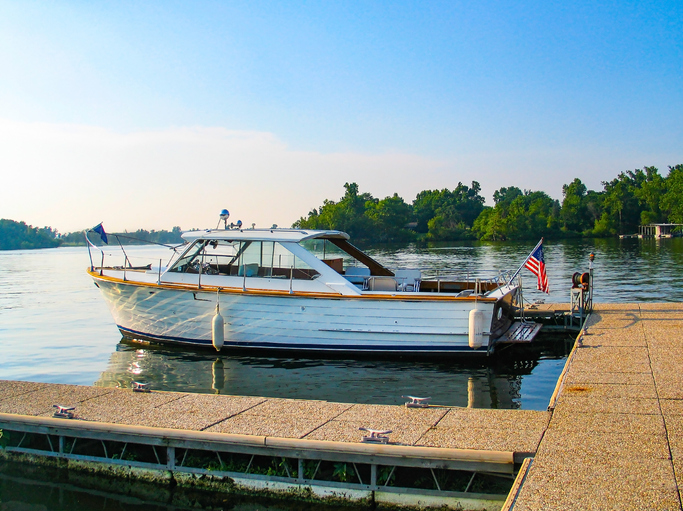
How to Sleep on a Boat
To get a good night's sleep on a boat, you need to feel comfortable and safe. Having the proper supplies and following some simple tips about how to sleep on a boat can go a long way toward making the experience enjoyable. Here are some of the most important tips for making sleeping on a boat easy and restful.
- Bring plenty of lights and batteries to illuminate different areas of the boat at night, including a bright LED headlamp for hands-free use.
- Nights on the water can be very cool, so bring cool-weather clothes and warm pajamas, plus a sheet, blanket, or sleeping bag to help keep you comfortable at night.
- As a group, establish an evening quiet time that all parties can agree to so those who want to go to sleep can do so uninterrupted.
- If you have difficulty sleeping around noises or lights, bring a sleeping mask that can block out light and soft earplugs to block out sound.
- Lights at night can attract insects, especially in warmer climates, so fit your boat for screens and mosquito netting, and don’t hesitate to use bug spray to keep insects from bothering you while you are enjoying the evening and then falling to sleep.
More information:
- Sailing at Night: Top Tips
- Living on a Sailboat: Is it Right for You?
- The Best Boats to Live On Full Time
- Life on the Water: Living Aboard a Trawler Boat
- The Best Types of Boat to Live on After Retirement
- Types of Houseboats: Different Home Styles for Living on the Water
- Is Living on a Boat Right for You? The Pros and Cons of Living on a Boat
This article was most recently updated in June 2023 by John Burnham.
Written By: Toi Williams
More from: Toi Williams
Related Articles and Guides
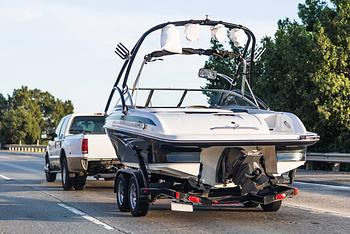
29th Mar 2024
How to Transport Your Boat Four Different Ways
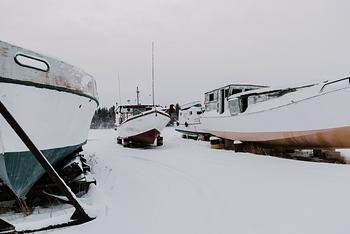
18th Oct 2023
How to Winterize a Boat: Steps, Checklist and Costs
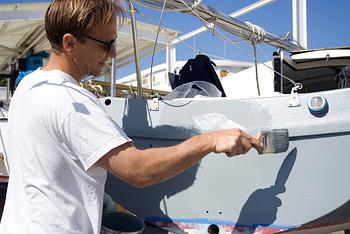
20th Sep 2023
Painting a Fiberglass Boat: A Detailed Guide
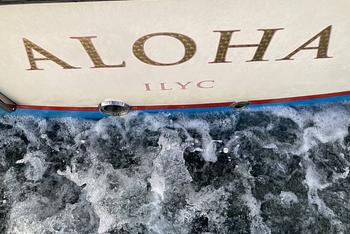
19th Sep 2023
Renaming a Boat the Proper Way
- Explore Rightboat
- Boats for Sale
- Boating Articles
- Buyers Guide
- About RightBoat
- Sell Your Boat
- Boat Selling Advice
Enter your email to keep up to date with the latest news
Join for free
Sign up now for free and discover how easy it is to keep up to date with THE latest boats for sale. Find your right boat, and tailor your voyage to finding your next boat.
Benefits of becoming a member:
- Set up tailored alerts
- Personalise your experience
- Download full specifications and broker details
- Keep tabs on your favourite boats
Are you a broker? Join as a Broker
Rightboat - join for free.
Do you have an account already? Login
Save this search
Save your search and receive new boats in your email..
You can unsubscribe from your alerts whenever you like. By pressing the button you accept the Legal Terms and conditions
No search results for: "{{ searchQuery }}".
Search results for: "{{ searchquery }}"., sailing at night: how to prepare for night sailing.
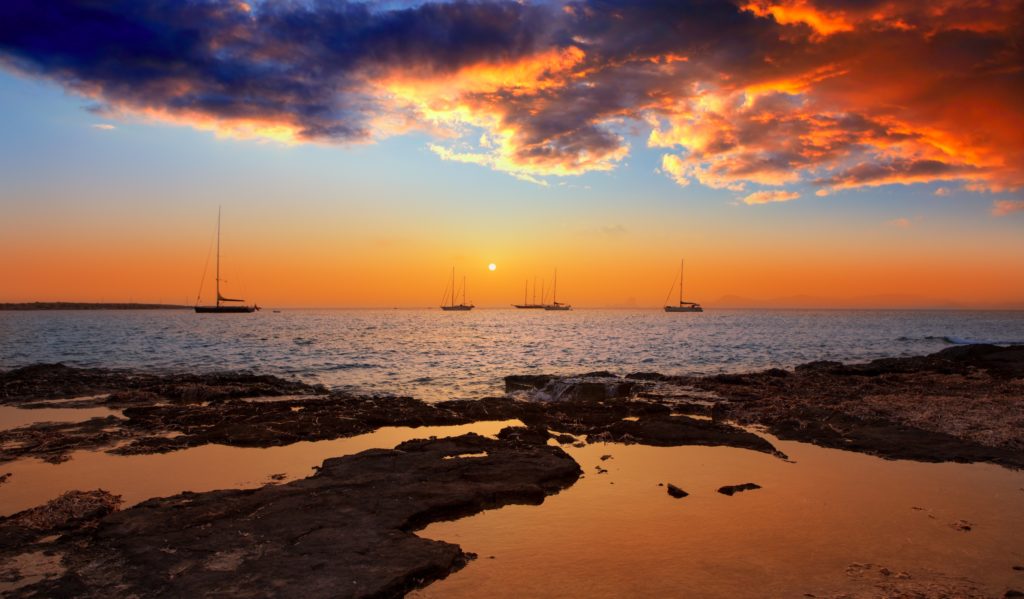
When it comes to renting a boat and going on a sailing holiday, night sailing attracts many sailors. Indeed, there is nothing more mysterious than hearing one’s ship sailing in total darkness. Offshore racing skippers are usually spend nights at sea to win their regattas. However, in the case of pleasure sailing you will also have to sleep on a boat. If you have to reach a specific destination by a certain date, this can be a good solution to enjoy your daytime stopovers.
But be careful, sailing at night requires a certain amount of preparation. Indeed, it can be more complex because of the lack of visibility, which hinders the perception of obstacles and the evaluation of distances.
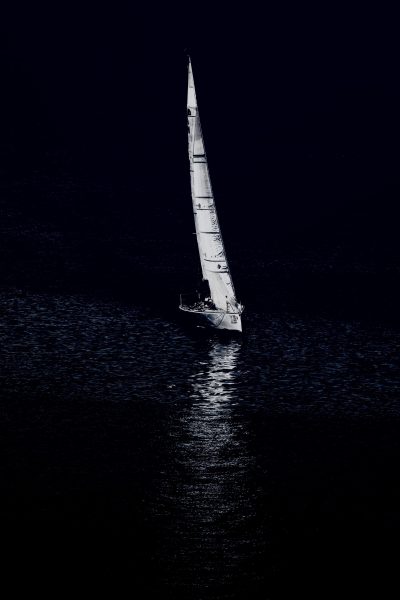
Preparing for night sailing
As with any departure, it is essential to prepare for the trip by looking at the weather and the itinerary ahead. Take the time to take a look at your boat, check the weather forecast and note the tide times. It is essential to think about your sailing itinerary before the start. Even if you are using a GPS, it is useful to identify the various danger zones on your route and the lights assigned to them.
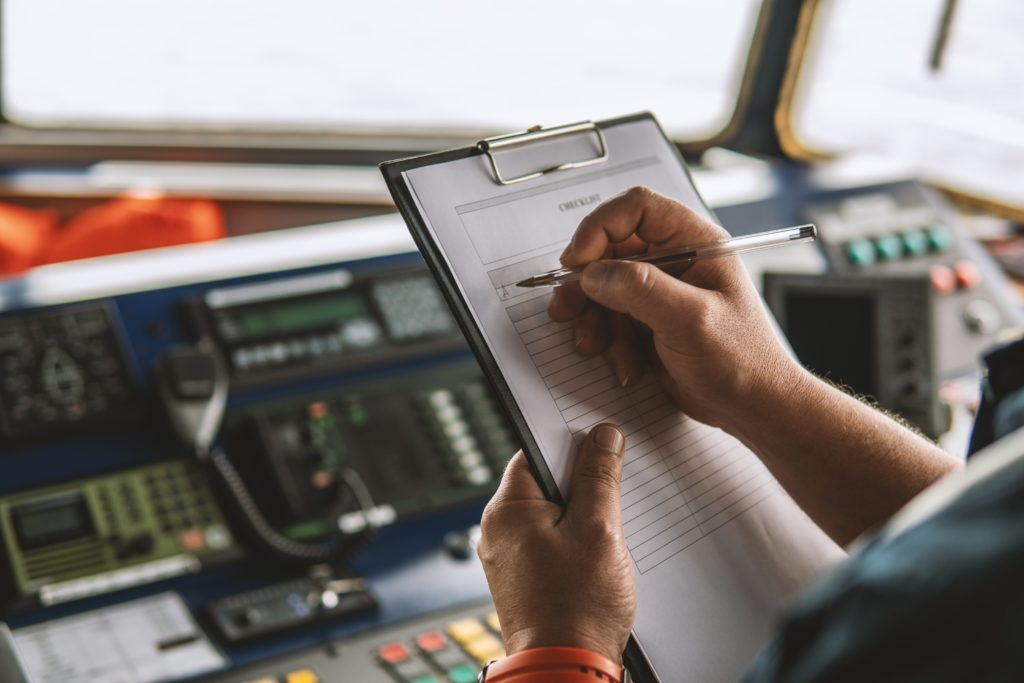
Night navigation requires more preparation of the boat in order to simplify manoeuvring in the dark. You must prepare the boat for night sailing. You have to clear the deck of all unnecessary ropes and prepare the sail for any possible manoeuvres. If you wish to sleep on a sailboat, remember to adapt the sail area, it is not recommended to sail under a spinnaker at night when cruising.
Before using your boat at night, you should check that your traffic lights are in perfect working condition, it will allow other boats to spot you at night. In addition to your boat’s lighting, you must provide a flashlight and headlamps for your crew members.
The sailor in the dark
Sailing at night is a very intense experience for any sailor, as he has to be especially careful. All the senses are awake and decision making is less obvious than during the day.
On the one hand, visibility is significantly lower when sailing at night. Even if the sailor’s eye gets used to the dark, the adaptation time is about 20 minutes. Any change in light if you return to the cabin regularly, for example, will hinder the adaptation process. It is therefore advisable to reduce the number of trips back and forth in the boat as much as possible.
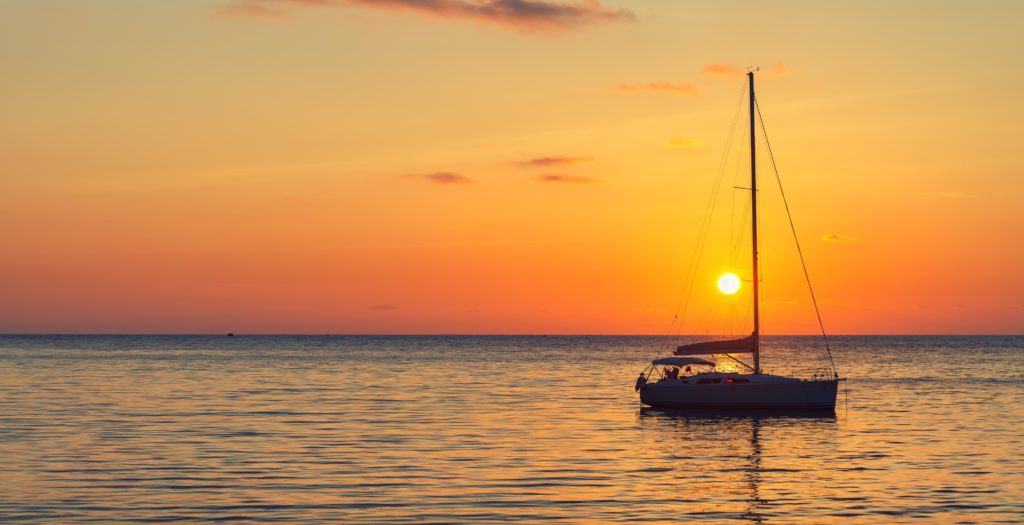
As far as the equipment is concerned, always bring warm clothing, as the nights can be very cold. For your comfort and consistency, it is essential to maintain good body heat. Sleeping at sea for the first time is an intense experience that must be carried out in the best comfort.
It is also important to respect sleeping times, as staying awake at all times can be more dangerous. Usually the most difficult period of sailing is between 2 and 5 am. One of the best tips for staying awake is to take small portions of food with you and to keep yourself hydrated constantly.
The organization of the night crew
When sailing at night, crew members take turns at the helm to alternate between rest and navigation. You must define roles between the different crew members, for the sailing shifts and the tasks of each one.
Shift refers to a period of time during which a crew member is on duty or at rest. It is a particular rhythm that all crew members must adapt. You must define the duration of the shift in advance for each crew member. The shift may be carried out alone or with other crew members by using bearing systems. When working a shift alone, the maximum length is 3 hours at night.
At night, on a boat all the manoeuvres become more complex and the sailor will be more quickly destabilized. If the skipper has to go out on the deck of the boat, it is essential that he secures himself to prevent any risk of man overboard. In addition to his compulsory lifejacket, the skipper must always be equipped with a harness.

A major risk when spending the night at sea is that a member of the crew may fall into the water. Therefore it’s essential to respect the basic rule that every crew member who is not in the cabin must wear a lifejacket. Also, to have a watertight torch attached to the jacket so if he falls into the water can be spotted . If you don’t respect this procedure, it’s very difficult to find a man in the water, the chances are less than 1%.
Another risk of night navigation is not to see an obstacle blocking the boat’s path. To do this, you must know the meaning of the danger lights but also the meaning of the lights of other boats to avoid any crash. Knowing the lights and markings is essential because at night at sea they are the only markings.
Making a night stopover on a boat is a unique experience that is achievable as long as you take all precautions before and during sailing. The crew will organize themselves to perform night shifts. Firstly, you will plan your itinerary according to the danger zones. Then, during your navigation you will have to trust your GPS map as well as the lights that will appear in front of you.
With all of these information, organizing a perfect sailing trip won’t be difficult for you!
You might like these articles
Top 10 christmas destinations for boating enthusiasts, set sail into the new year, renting a boat with a disability: opening new horizons at sea.
- Bottom Painting & Prop Speed
- Fiberglass & Paint Work
- Running Gear & Valves
- Full-Service Team
- Monthly Maintenance Programs
- Dockside Service Team
- Full-Service Boatyard
- Management Services
- Accounting & Reporting
- Relevant Management Experience
- News and Media
What to Do When Boating at Night

Why You Should Be Careful on a Boat at Night As the premier yacht management company in South Florida, we know not only how to keep boating at night as safe as possible but also why it is so important to follow these rules and regulations. Having the proper checks in place to ensure safety is a must because of several different reasons, including:
Decreased visibility on the water and the lack of sunlight will likely mean you cannot see the outlines of vessels but can only see their lights. Night divers or other people who are in the water at night. They can be hard to see and even harder to hear due to engine noise. Negligence on the part of other boaters. Some boaters may not know, or simply not account for, the additional steps that boaters should be taking while boating at night. All these reasons could lead to an accident that could damage your vessel or lead to an injury. The goal is to have a fun and memorable adventure while out on the water, but safety should always come first.
What to Do When Night Boating When on a boat at night, you can follow a few simple methods of staying safe that will not only keep you and all your guests enjoying the night but also keep anyone else out of harm’s way. For starters, be sure that you have all the proper lights in place. In most places, it is the law to have your active boat outfitted with light that will help with visibility. This is what is required, but there are also several other ways that you can make yourself and others as safe as possible when boating at night, such as:
Slow down to account for the lessened visibility that boating at night entails. Have somebody on the lookout to act as a pair of extra eyes, keeping an eye out for other ships’ lights. Keep close to your radio, so you can hear updates regarding other ships or even your own. Use GPS and night vision equipment whenever you may feel it is necessary to have technology assist your own vision. Keep an ear out for noise. Sometimes you may not be able to see when other ships are approaching, but you will be able to hear the noises being emitted by them. When docking, be especially careful. You wouldn’t want to cause any damage to your boat when docking at night just to save some time. These tips are amazing in the way they can keep you and anybody else in your vicinity out of harm’s way. And if you need any help with the installation of equipment or upkeep of your vessel to keep your boat or yacht in pristine and perfectly safe conditions, then there is only one team to consider in the South Florida area.
Our South Florida Yacht Management Team Is Here to Help If you want to have your vessel kept in the best condition possible to make boating at night a breeze, then be sure to get in touch with the premier yacht management team and ask about our amazing services or expertly run boatyard ! Our experts have years of experience in the field and would be more than proud to be the team you consider for your next servicing or electronic installation. If you are interested in learning more about all things boating, then be sure to read some of our other articles and get more insights from trusted experts in yacht management that Fort Lauderdale trusts.
Related Readings Boating Right of Way Rules Should You Hire a Boat Captain?

For all inquiries, fill out the form below and a member of our team will respond as soon as possible
Overnight Anchoring Rules (13 Do's & Don'ts Explained)
When anchoring overnight, it's crucial to choose the right spot and set your anchor properly. Doing some advanced planning and familiarizing yourself with the local anchoring regulations is a must, as the rules can vary depending on the area. In this article, we will discuss 13 do's and don'ts that you need to know before setting out for a night on the water.
Throughout your overnight stay, be considerate of other boaters and use a friendly tone when interacting with them and marina staff; maintain proper lighting; keep an eye on the weather to avoid surprises, and keep in mind local regulations that restrict overnight anchoring in certain areas.
Strive to create a positive atmosphere and promote goodwill among the boating community. After all, everyone is there to enjoy the beautiful natural surroundings and share their passion for sailing. As a responsible boater, it's important to adhere to these rules and respect fellow boaters and the environment.
- Take your time to pick the right spot and properly set the anchor, so you can protect your vessel and enjoy a safe and comfortable overnight stay on the water.
- Remember to always monitor your boat's position and be prepared to reset the anchor if necessary to maintain a safe overnight stay.
- Do some advanced planning and familiarize yourself with the local anchoring regulations.
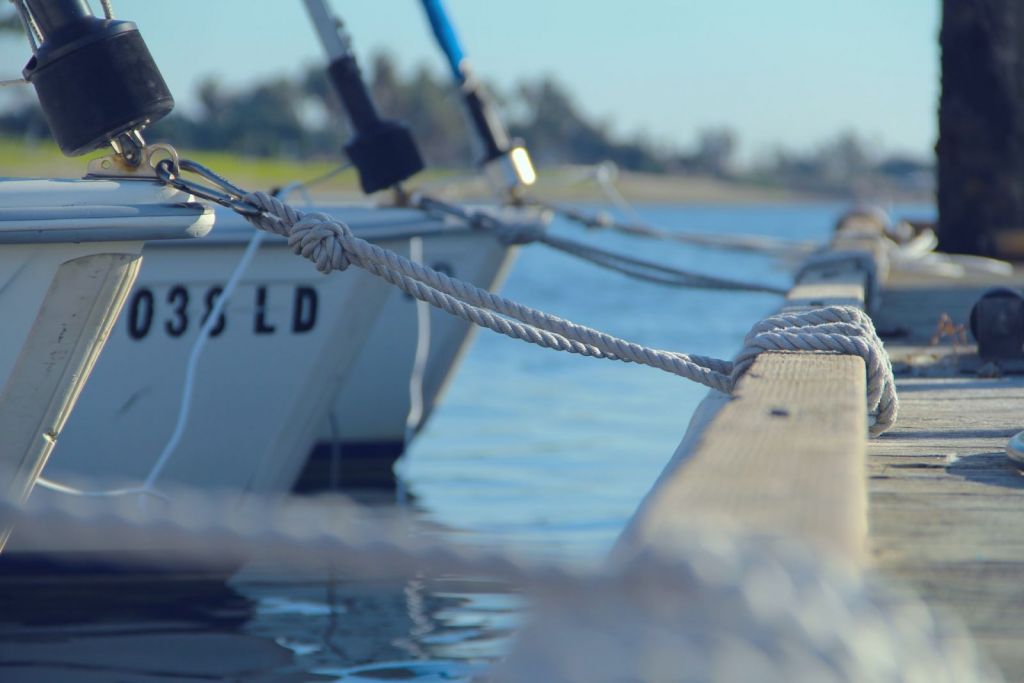
On this page:
13 do's and don'ts of overnight anchoring, the basics of overnight anchoring, troubleshooting common anchor problems, do: assess current and wind conditions.
Before anchoring, always check the current and wind conditions to ensure that your boat will remain securely anchored. Make sure to take into account any changes in weather conditions that may occur overnight. Understanding these factors will help you determine the best location and anchoring technique for your boat. Anchor in a well-protected area to minimize the impact of wind and current on your boat.
DO: Set two anchors if necessary
In difficult or congested anchoring situations, consider setting two anchors . This provides added security and reduces the boat's swinging radius. This is particularly true in areas with strong currents or winds.
DO: Give enough scope to your anchor rode
Use a scope of 7:1 for overnight anchoring. This means letting out 7 feet of rode for every 1 foot of water depth. A longer scope provides more horizontal pull, allowing your anchor to hold more securely. As a general rule, you should use at least 7 to 10 times the depth of the water in anchor rode length.
DO: Practice courtesy and communication
Communicate with your fellow boaters and make sure everyone is aware of each other's anchoring plans. Be courteous by not obstructing their views or access, and share helpful information when necessary. Communicate your intentions and be respectful of their space.
DO: Set an anchor watch
Stay vigilant and monitor your anchor frequently, especially during the first few hours after setting it. Check for dragging and ensure it's holding well. Set an anchor watch overnight to monitor your boat's position and ensure that it remains securely anchored. This can be done manually or with the help of an anchor alarm.
DO: Monitor the weather
Stay informed of the weather conditions and any changes that might occur. Be prepared to adjust your anchoring system if necessary.
DO: Keep a clean and tidy deck
Maintain a clutter-free and organized deck while anchored. A clean and tidy deck is not only important for safety reasons, but it also helps to ensure that your anchor rode doesn't become tangled or fouled. Make sure to stow any loose gear or equipment before anchoring for the night. This will make it easier to deal with any issues that may arise, prevent accidents, and make your stay more enjoyable.
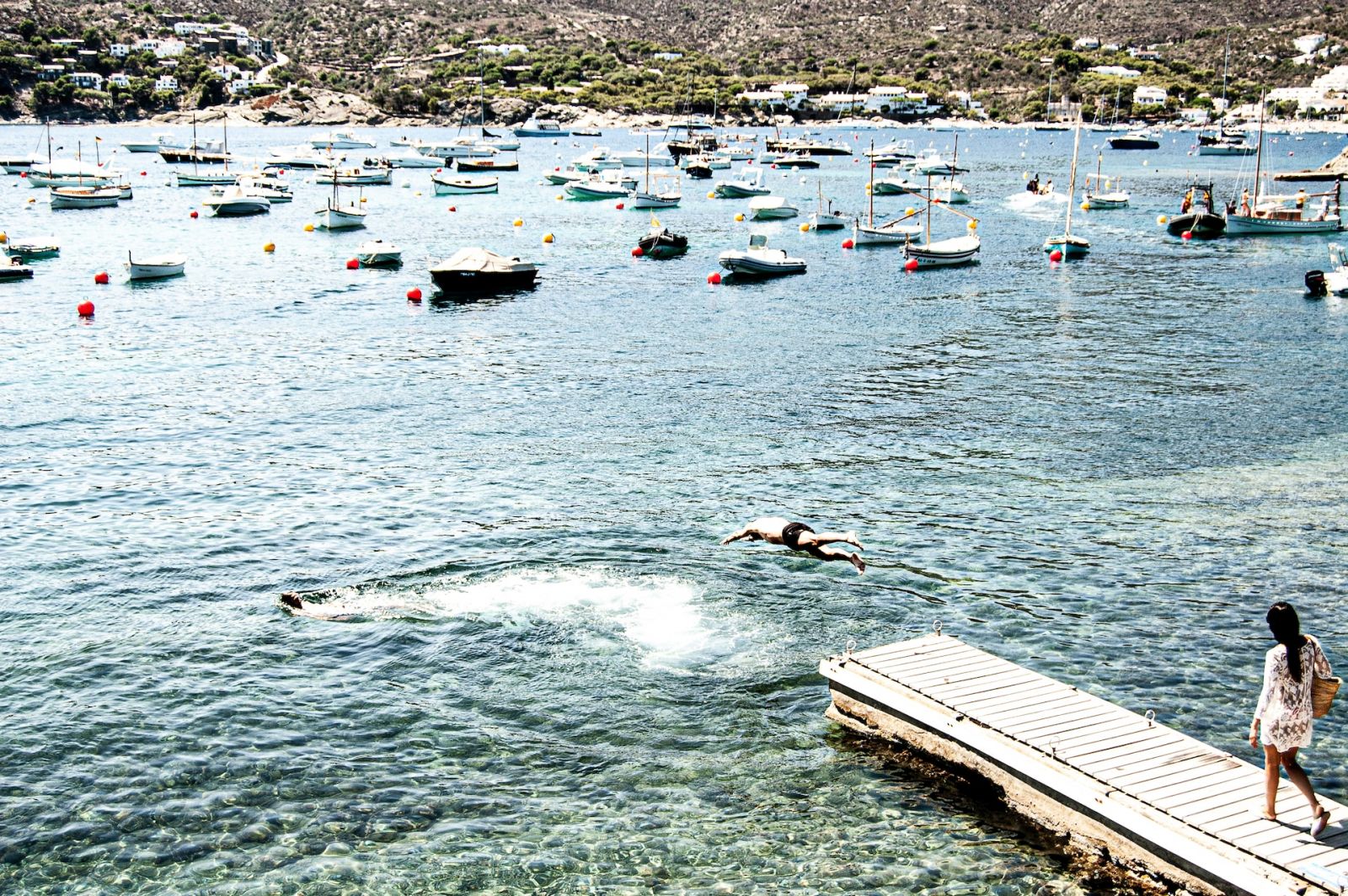
DON'T: Anchor in restricted areas
Avoid anchoring in marked navigation channels, shipping lanes, swimming areas, or areas designated for other activities. These areas may have specific regulations, and you could be putting yourself and others at risk. Anchoring in restricted zones can also result in fines or other penalties.
DON'T: Create an obstacle course for others
Be mindful of other boats in the anchorage when setting your anchor . Leave enough room for everyone to safely maneuver and avoid creating obstacles for others. Be aware of other boats in the area and avoid creating an obstacle course for them. This means giving other boats plenty of space to maneuver and ensuring that your anchor rode doesn't cross over other boats' anchor rodes.
DON'T: Use insufficient ground tackle
Ensure your anchor and rode are of sufficient size and strength for your boat. A good rule to follow is the bigger, the better. Insufficient ground tackle, such as an anchor that is too small or an anchor rode that is too short, can result in your boat becoming unanchored and drifting away. Make sure to use the appropriate ground tackle for the size and weight of your boat.
DON'T: Ignore your neighbors
Be respectful of other boats by giving them enough room. Avoid anchoring too close to your neighbors and observe any local anchoring customs. Minimize noise and disturbance, and avoid any actions that could interfere with their enjoyment of the anchorage.
DON'T: Leave your navigational lights off
During overnight stays, keep your navigational lights on to alert others of your presence and avoid collisions. Leaving your navigational lights off at night can also result in fines or other penalties. Make sure to turn on your navigational lights as soon as you anchor for the night.
DON'T: Overlook local regulations
Always check for local regulations regarding anchoring and be prepared to comply. Some areas have specific restrictions or requirements that must be followed, such as requirements for anchor lights, anchor watches, or other regulations specific to the area. Failure to comply with local regulations can result in fines or other penalties.
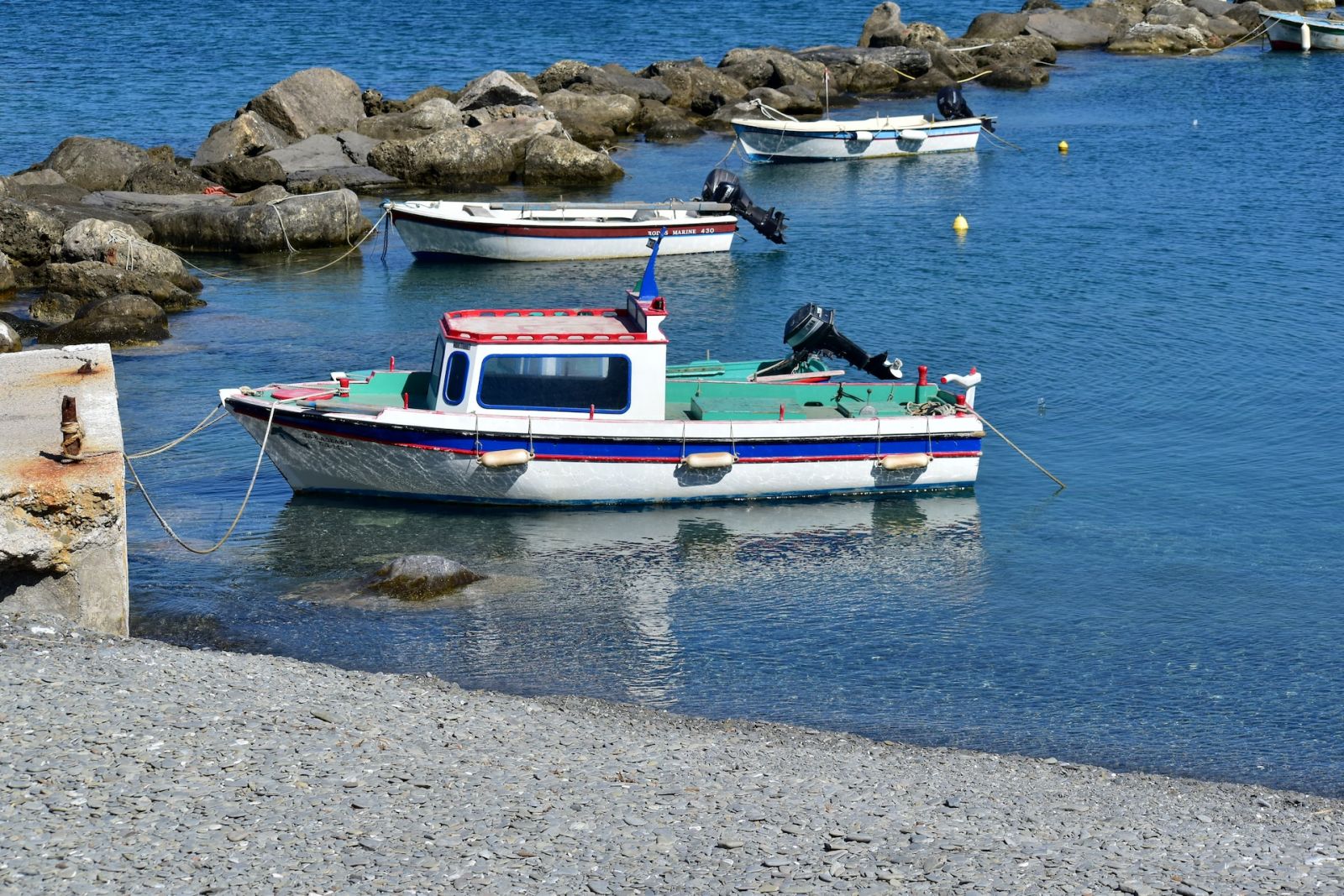
Importance of proper anchoring
Anchoring your boat overnight is a vital skill that every boater should know. Proper anchoring ensures your boat's safety and prevents drifting caused by changing wind and tide conditions. When anchored correctly, your boat stays securely in place throughout the night, giving you peace of mind while you rest.
To ensure proper anchoring, it's essential to have the right equipment and knowledge. This includes understanding the type of anchor that works best for different seabeds, such as sand, mud, or rocks, and using the appropriate length of chain or rope (referred to as "scope"). A scope ratio between 3:1 and 5:1 is typically sufficient, depending on the length of the chain and the desired pull angle on the anchor.
Choosing an anchorage
Selecting the right spot to anchor overnight is crucial for both safety and comfort. When looking for an ideal location, keep these factors in mind:
Depth and seabed : The anchorage should have enough water depth for your boat's draft, and the seabed composition should be suitable for your chosen anchor type.
Protection : Choose a location that is sheltered from strong winds, waves, and currents. This will make your anchoring more stable and your overnight stay more comfortable.
Space : Ensure there's enough room for your boat to swing around the anchor as the wind and tide shift. Also, the area shouldn't be too crowded with other boats, as this could lead to collisions.
Legal restrictions : Be aware of any regulations or restrictions that might apply to the anchoring location, such as no-anchoring zones or time limits on how long a boat can be anchored. Keep in mind that policies may vary depending on the jurisdiction.
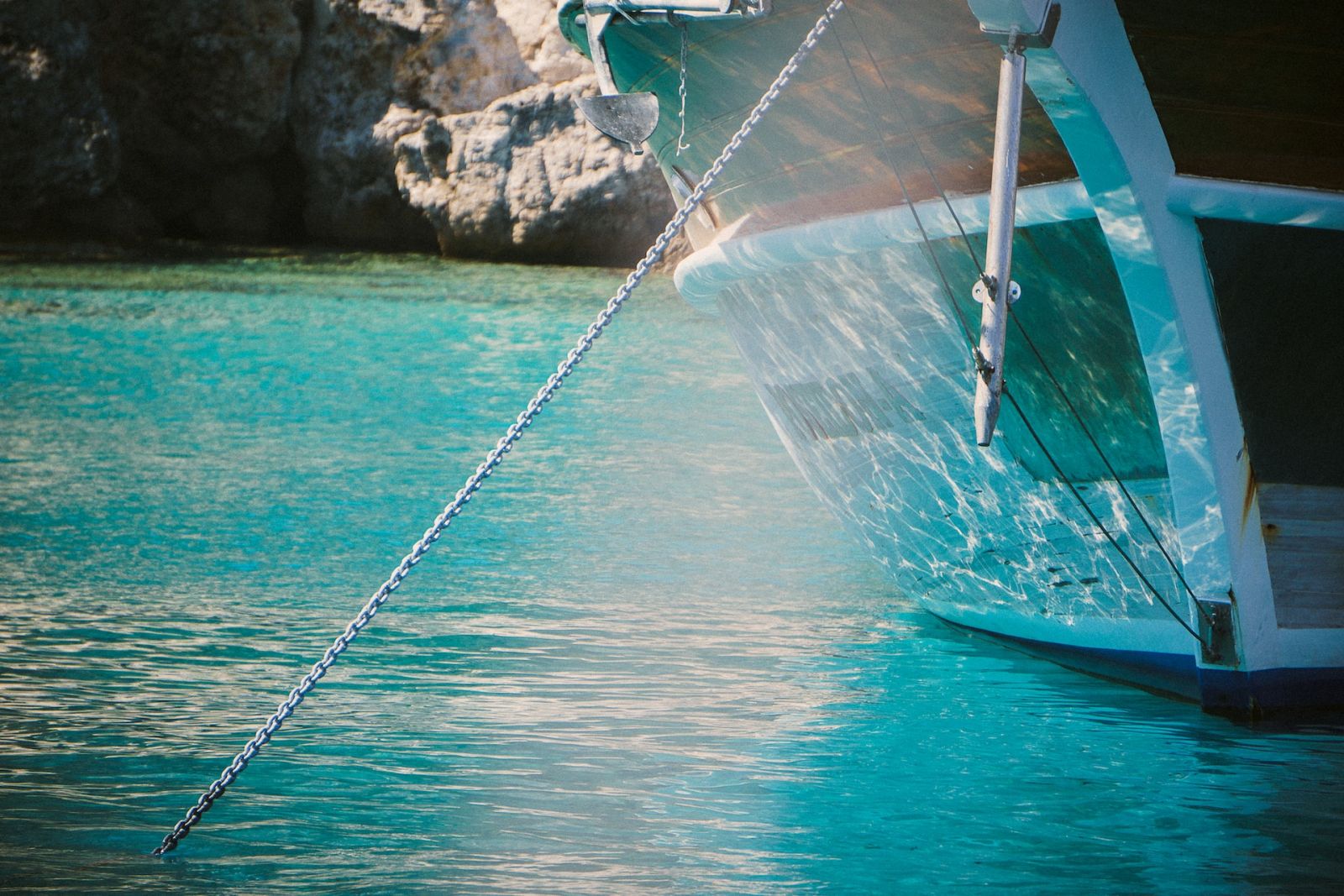
When anchoring your boat overnight, it's essential to ensure a smooth and worry-free experience for a good night's sleep. In this section, we will discuss some common anchor problems and useful tips to tackle them.
Anchor dragging
Anchor dragging is a common issue experienced by many boaters. This occurs when the anchor fails to maintain its grip on the seabed, causing your boat to drift. To prevent anchor dragging, follow these steps:
Choose the right anchor type : Different anchors work best on different types of seabed, so make sure to select an anchor suitable for the area you are anchoring in. For example, in a muddy seabed, anchors with a large surface area will be more reliable.
Set your anchor properly : Lower the anchor slowly until it reaches the bottom, then gently back up your boat while letting out the anchor rode. This will allow the anchor to dig-in properly.
Scope ratio : Maintain a scope ratio of at least 5:1, meaning for every foot of water depth, let out five feet of rode. This will provide a more horizontal pull, helping the anchor to hold better.
Be vigilant : Check your boat's position frequently using GPS or other navigational devices to detect any signs of dragging early on.
Anchor rode tangles
Another common problem is the anchor rode getting tangled. Here are some tips to help you avoid this issue:
Use a swivel : Attach a swivel to the anchor shackle to allow the rode to spin freely, reducing the chances of tangles.
Avoid paying out too much rode : While a longer scope is helpful for better holding, excessive rode can significantly increase the chances of it getting tangled.
Keep it organized : As you pay out the rode, make sure it is properly organized on the deck or anchor locker to avoid any loops or knots forming.
Stay alert : When anchoring in areas with other boats nearby, pay attention to their anchor rode setup and direction to minimize interference.
Leave a comment
You may also like, how to measure your anchor chain size (two ways).
Buying new anchor your chain for your boat can be more complex than it sounds. You can't just walk into a marine store and order "A hundred meters of your best." …
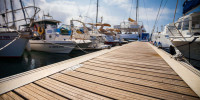
How Much Does it Cost to Dock a Boat for a Year?
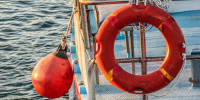
Ultimate Guide to Required Safety Equipment on a Boat
Own your first boat within a year on any budget.
A sailboat doesn't have to be expensive if you know what you're doing. If you want to learn how to make your sailing dream reality within a year, leave your email and I'll send you free updates . I don't like spam - I will only send helpful content.
Ready to Own Your First Boat?
Just tell us the best email address to send your tips to:
- News & Events
Xclusive News
Dubai by moonlight: a guide to night-time yachting experiences.
- 24 Oct 2023

Dubai, the shimmering jewel of the Middle East, is known for its glitzy skyscrapers, opulent shopping malls, and luxurious lifestyle. But as the sun dips below the horizon, the city transforms into a celestial oasis, offering an entirely different experience. And what better way to enjoy Dubai's nocturnal charm than aboard a yacht? Night-time yachting in Dubai isn't just a ride; it's a voyage of dreams beneath the moonlit sky.
When it comes to luxurious marine escapades, yacht rental Dubai stands out as a sought-after service among tourists and residents alike. The idea of cruising along the coast, with the iconic skyline of Dubai on one side and the vast expanse of the Arabian Gulf on the other, is nothing short of mesmerizing.
Charting the Night Waters
Begin your voyage by renting a yacht at the Dubai Marina. Known for its picturesque views and top-notch facilities, this location offers a plethora of options for yacht for rent in Dubai. With an array of yachts varying in size and facilities, there's something for every traveler, be it a romantic getaway or a party under the stars.
Once aboard, set sail towards the open waters. The moonlight reflecting off the calm waters creates a serene ambiance, perfect for a relaxing journey. With a backdrop of twinkling stars, the Palm Jumeirah looks even more enchanting from the sea. Navigate around this man-made wonder, taking in the views of luxurious villas and hotels.
Midnight Feasts and Entertainment
Dubai's yachting experience is not just about the voyage; it's also about savoring the finest cuisines under the starry sky. Many yacht rental Dubai services offer catering options, featuring gourmet dishes that are sure to tantalize your taste buds.
For those seeking entertainment, there's no dearth of options. From onboard DJs to live performances, night-time yachting can turn into a lively party scene.
Capturing the Moments
Don't forget to bring your camera along. The juxtaposition of the moonlit sea against Dubai's illuminated skyscrapers offers a myriad of photo opportunities. Capture the ethereal beauty of the Burj Al Arab or the Atlantis as you cruise by.
Wrapping Up
As the night ends and dawn approaches, head back to the marina with a heart full of memories. Night-time yachting in Dubai is not just a journey; it's an experience, a tale of romance, luxury, and the magic of moonlight.
Whether you're looking to celebrate a special occasion or just wanting to experience the city from a different perspective, a yacht for rent in Dubai is your ticket to an unforgettable nocturnal adventure. So, cast off and set sail into the moonlit waters of Dubai, and let the city's charms captivate your soul.
LATEST NEWS

Online Booking
- Yacht rental Dubai
- Work with us
- Rent your yacht
- Terms & Conditions
- Privacy Policy
Our Services
- Private Yacht Rental
- Yacht Tours
- Speedboat Tours
- Sunset & Dinner Cruise
- Sports Fishing
- Gulet Experience
- Yacht Party Dubai
- Superyacht Experience
- Superyacht Charter
Get in touch
- Unit 3, Marina Level, Al Majara Tower, Al Hubob Street, Dubai Marina, Dubai
- +971 4 432 7233
- Become a Partner
- Partner Portal Login

Please use a modern browser to view this website. Some elements might not work as expected when using Internet Explorer.
- Landing Page
- Luxury Yacht Vacation Types
- Corporate Yacht Charter
- Tailor Made Vacations
- Luxury Exploration Vacations
- View All 3592
- Motor Yachts
- Sailing Yachts
- Classic Yachts
- Catamaran Yachts
- Filter By Destination
- More Filters
- Latest Reviews
- Charter Special Offers
- Destination Guides
- Inspiration & Features
- Mediterranean Charter Yachts
- France Charter Yachts
- Italy Charter Yachts
- Croatia Charter Yachts
- Greece Charter Yachts
- Turkey Charter Yachts
- Bahamas Charter Yachts
- Caribbean Charter Yachts
- Australia Charter Yachts
- Thailand Charter Yachts
- Dubai Charter Yachts
- Destination News
- New To Fleet
- Charter Fleet Updates
- Special Offers
- Industry News
- Yacht Shows
- Corporate Charter
- Finding a Yacht Broker
- Charter Preferences
- Questions & Answers
- Add my yacht
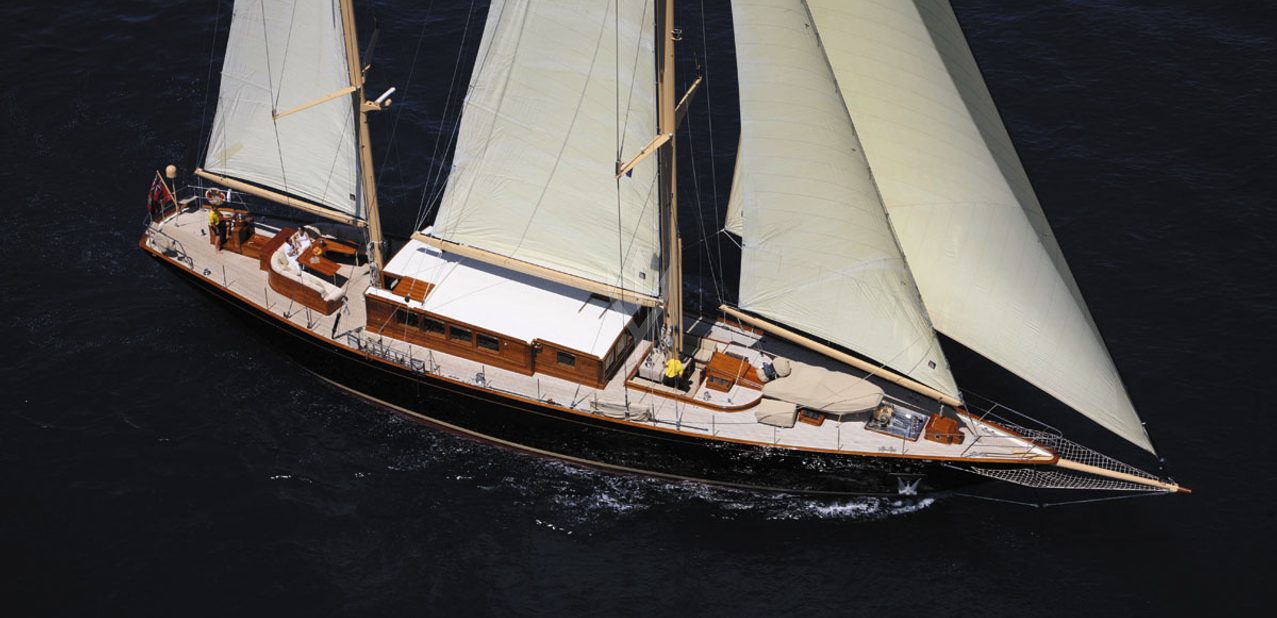
NOT FOR CHARTER *
This Yacht is not for Charter*
SIMILAR YACHTS FOR CHARTER
View Similar Yachts
Or View All luxury yachts for charter
- Luxury Charter Yachts
- Sailing Yachts for Charter
Strangers in the Night
- Amenities & Toys
STRANGERS IN THE NIGHT yacht NOT for charter*
37.5m / 123' | cek-lift | 2004.
Owner & Guests
Cabin Configuration
- Previous Yacht
Special Features:
- 2,000nm range
- RINA (Registro Italiano Navale) classification
- Sleeps 8 overnight
The 37.5m/123' sail yacht 'Strangers in the Night' (ex. Bushido) was built by Cek-Lift at their Bodrum shipyard. Her interior is styled by design house Alexandra Schoenburg and she was completed in 2004. This luxury vessel's exterior design is the work of Paolo Scanu.
Guest Accommodation
Strangers in the Night has been designed to comfortably accommodate up to 8 guests in 4 suites. She is also capable of carrying up to 5 crew onboard to ensure a relaxed luxury yacht experience.
Range & Performance
Strangers in the Night is built with a steel hull and teak superstructure, with teak decks. Powered by 1 x diesel MAN (D2866LXE) 347hp engines, she comfortably cruises at 9 knots, reaches a maximum speed of 10 knots with a range of up to 2,000 nautical miles from her 10,500 litre fuel tanks at 9 knots. Her water tanks store around 6,000 Litres of fresh water. She was built to RINA (Registro Italiano Navale) classification society rules, and is MCA Compliant.
*Charter Strangers in the Night Sail Yacht
Sail yacht Strangers in the Night is currently not believed to be available for private Charter. To view similar yachts for charter , or contact your Yacht Charter Broker for information about renting a luxury charter yacht.
Strangers in the Night Yacht Owner, Captain or marketing company
'Yacht Charter Fleet' is a free information service, if your yacht is available for charter please contact us with details and photos and we will update our records.
Strangers in the Night Photos
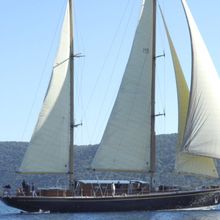
NOTE to U.S. Customs & Border Protection
Specification
S/Y Strangers in the Night
SIMILAR LUXURY YACHTS FOR CHARTER
Here are a selection of superyachts which are similar to Strangers in the Night yacht which are believed to be available for charter. To view all similar luxury charter yachts click on the button below.

Aegean Cipper
41m | Bodrum Shipyard
from $17,000 p/week ♦︎
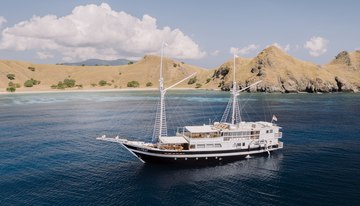
40m | Konjo Boat builders
from $55,300 p/week
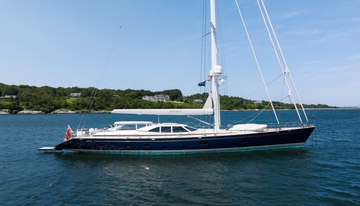
37m | Fitzroy
from $91,000 p/week
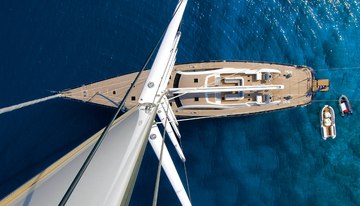
Aristarchos
40m | Nautor's Swan
from $80,000 p/week ♦︎
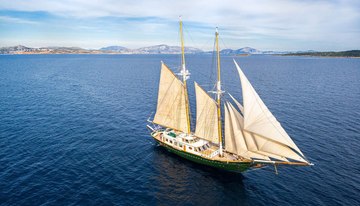
35m | Basimakopouloi
from $40,000 p/week ♦︎
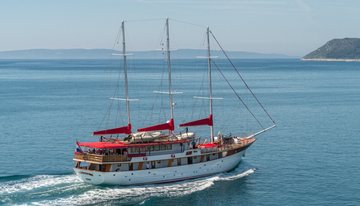
41m | Custom
from $35,000 p/week ♦︎
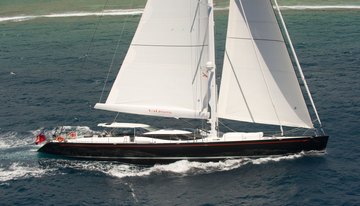
37m | Yachting Developments
from $78,000 p/week ♦︎
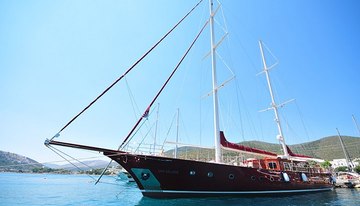
Casa Dell Arte II
39m | ADA Yacht Works
from $37,000 p/week ♦︎
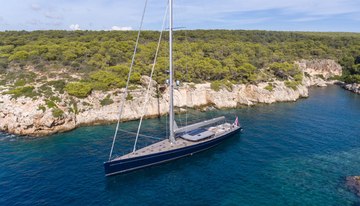
39m | Vitters
from $85,000 p/week
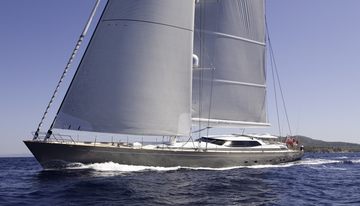
Destination
41m | Alloy Yachts
from $100,000 p/week
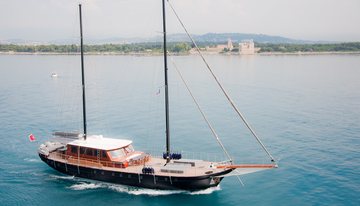
34m | Bodrum Shipyard
from $33,000 p/week ♦︎

As Featured In
The YachtCharterFleet Difference
YachtCharterFleet makes it easy to find the yacht charter vacation that is right for you. We combine thousands of yacht listings with local destination information, sample itineraries and experiences to deliver the world's most comprehensive yacht charter website.
San Francisco
- Like us on Facebook
- Follow us on Twitter
- Follow us on Instagram
- Find us on LinkedIn
- Add My Yacht
- Affiliates & Partners
Popular Destinations & Events
- St Tropez Yacht Charter
- Monaco Yacht Charter
- St Barts Yacht Charter
- Greece Yacht Charter
- Mykonos Yacht Charter
- Caribbean Yacht Charter
Featured Charter Yachts
- Maltese Falcon Yacht Charter
- Wheels Yacht Charter
- Victorious Yacht Charter
- Andrea Yacht Charter
- Titania Yacht Charter
- Ahpo Yacht Charter
Receive our latest offers, trends and stories direct to your inbox.
Please enter a valid e-mail.
Thanks for subscribing.
Search for Yachts, Destinations, Events, News... everything related to Luxury Yachts for Charter.
Yachts in your shortlist
- New Terms of Use
- New Privacy Policy
- Your Privacy Choices
- Closed Caption Policy
- Accessibility Statement
This material may not be published, broadcast, rewritten, or redistributed. ©2024 FOX News Network, LLC. All rights reserved. Quotes displayed in real-time or delayed by at least 15 minutes. Market data provided by Factset . Powered and implemented by FactSet Digital Solutions . Legal Statement . Mutual Fund and ETF data provided by Refinitiv Lipper .
Woman goes missing from luxe yacht; captain sails off and has freezer replaced: investigator
Sarm heslop vanished 3 years ago today.

Sarm Heslop was last seen on this 47-foot catamaran
This drone footage shows a 47-foot catamaran anchored roughly 50 feet offshore in the U.S. Virgin Islands when Sarm Heslop went missing
After British flight attendant Sarm Heslop vanished from her boyfriend's luxurious catamaran, the 47-foot Siren Song, he sailed out of U.S. territorial waters and had the freezer replaced in Grenada, according to her family's private investigator.
Heslop was last seen alive three years ago Thursday, leaving a restaurant in the U.S. Virgin Islands with boyfriend Ryan Bane. Searches of land and sea came up empty, and despite the mystery surrounding her disappearance, police never searched the vessel.
David Johnston, a decorated former London homicide squad commander and hostage negotiator, is assisting Heslop's parents free of charge.
"We know he went to Grenada afterwards and had the freezer replaced on the boat. Why?" the Queen's Police Medal recipient pondered in a phone interview. "We know he had other parts of the forecabin replaced. Why?"
VIRGIN ISLANDS DEATHS: AMERICANS FACE CRIME, VIOLENCE AMID RISING CONCERNS OVER US TERRITORY'S POLICING
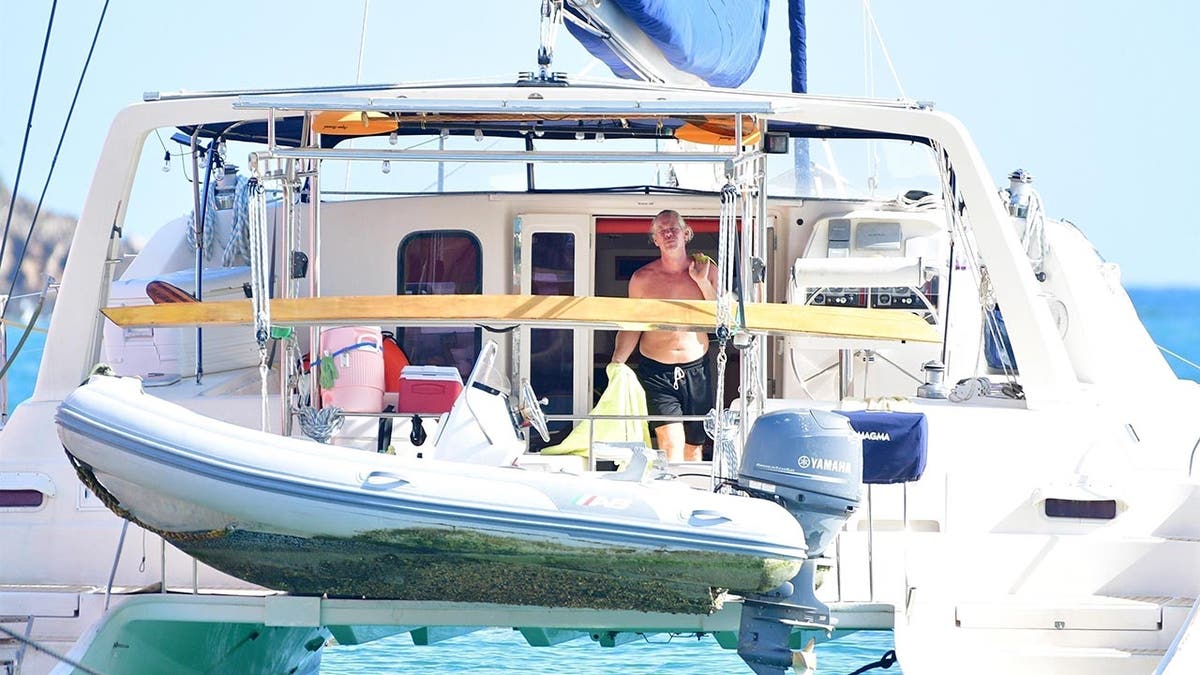
Ryan Bane, lover of missing British woman Sarm Heslop, aboard a yacht at the Le Phare Bleu Marina on the island of Grenada. Bane has been described by police as a "person of interest" in the disappearance of Heslop, a former FlyBe air stewardess who was last seen March 7, 2021. (Backgrid)
"He literally and metaphorically sails off into the sunset unchallenged, without anybody actually asking him for a full account of what actually happened." — David Johnston
Those questions remain unanswered because local police failed to obtain a search warrant for the vessel before Bane sailed out of their jurisdiction and is believed to have sold it, Johnston said.
Johnston told Fox News Digital Heslop's parents now consider her the victim of foul play and not a missing person. But they have been cut off by the island's police and political leadership, he said.
"Sarm likely is dead, and her death was untimely and could have been a murder," he said. "It could've been an accident, but no one will speak with us."

Sarm Heslop poses on a rope swing in the U.S. Virgin Islands in an undated photo shared to Instagram. The U.K. native has been missing since March 8, 2021, after she was last seen leaving a bar on St. John in the U.S. Virgin Islands. (Sarm Heslop/Instagram)
He said he first offered his assistance to Heslop's parents about 18 months ago and tried to engage USVI Gov. Albert Bryan Jr. and Virgin Islands Police Commissioner Ray Martinez. But he was unable to get results and says they'd stopped responding to the family and his own attempts at making contact.
"I've been spun along for the last 15 months by the governor and Ray Martinez, who said, 'You're welcome to come and look at the seat, but we're not going to talk about the inquiry. It's an active investigation, and we don't discuss active investigations," Johnston said.
"OK, so what are you doing, actually? ‘Oh, we can discuss that.’ Well, there is nothing being done actively."
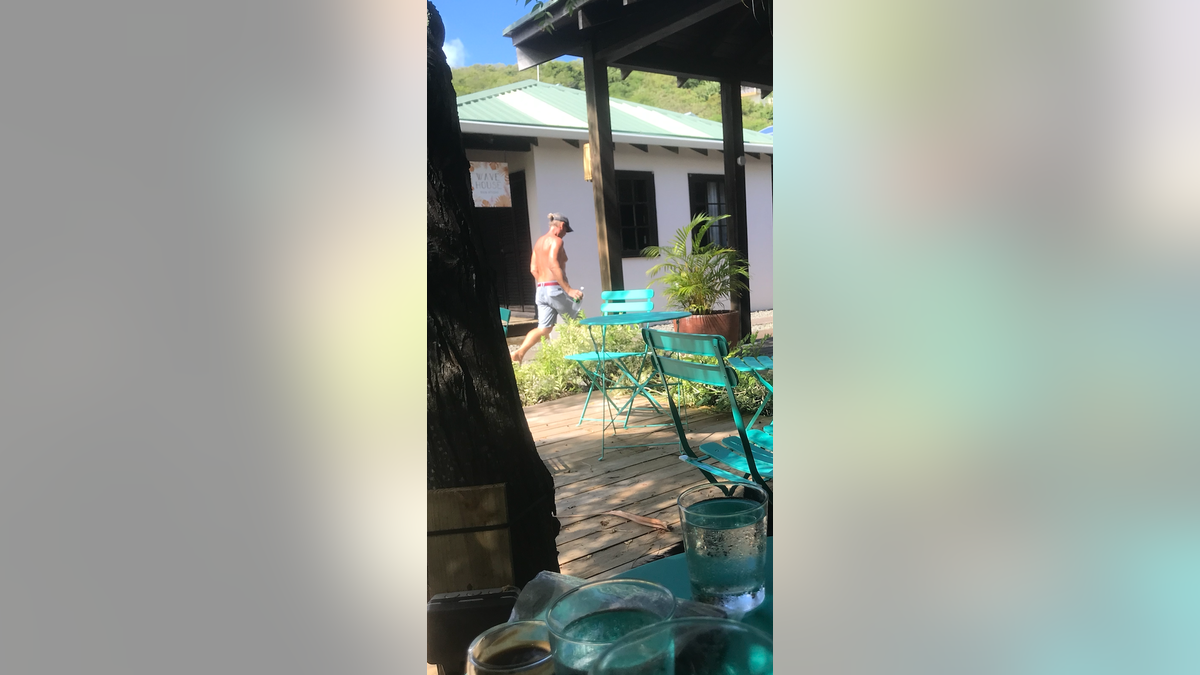
A U.S. citizen living in Grenada said Ryan Bane was seen multiple times in the Caribbean nation in the fall of 2021, months after Sarm Heslop vanished from his catamaran in the U.S. Virgin Islands. (Provided to Fox News Digital)
Martinez has been criticized for failing to address "rampant crime" in the Caribbean nation, a U.S. territory, according to the Virgin Islands Consortium , a local newspaper. In November, he earned the ire of Virgin Islands lawmakers after snubbing them during a public safety hearing.
MISSING WOMAN IN VIRGIN ISLANDS HAD AMERICAN BOYFRIEND QUICK TO ANGER: EX-WIFE
"Ray Martinez wasn't in charge when Sarm disappeared, so he had the option, perhaps, to put right some of the things that weren't right," Johnston said.
Early missteps included failures to collect cellphone or location data from the yacht or devices belonging to Heslop or Bane, he said.

Sarm Heslop seated on a boat. The globetrotting U.K. native has been missing since March 8, 2021, after she was last seen leaving a bar on St. John in the U.S. Virgin Islands. (Sarm Heslop/Instagram)
"At very minimum, [Bane] should have been interviewed under caution," he added, referring to the British version of a Miranda warning.
"Who knows what happened on that boat?" he asked. "But from my experience of 30 years of being a cop, he is a person of significant interest, and he has some questions to answer. And until he does that, he should remain as the most likely suspect in her disappearance and possible death."
MICHIGAN MAN'S 911 CALL REPORTING GIRLFRIEND MISSING IN US VIRGIN ISLANDS NEVER RECORDED: FAMILY
Glen Dratte, a spokesman for the department, dismissed the validity of private investigations in general.

Ryan Bane at a gym in Lake Orion, Michigan, in February, when two men confronted him about both a 2011 domestic violence incident against their cousin and the unsolved 2021 disappearance of Sarm Heslop. (Gary Stevenson)
"Question," he wrote to Fox News Digital in an email. "Can a private investigator from the U.S. Virgin Islands go to Scotland Yard (U.K.) and conduct an Investigation?"
He said there have been no new developments in the case and that previously collected evidence has been shared with prosecutors.
"The Virgin Islands Police Department continues to keep our thoughts and prayers with the family, friends and colleagues of Sarm Heslop," he added.
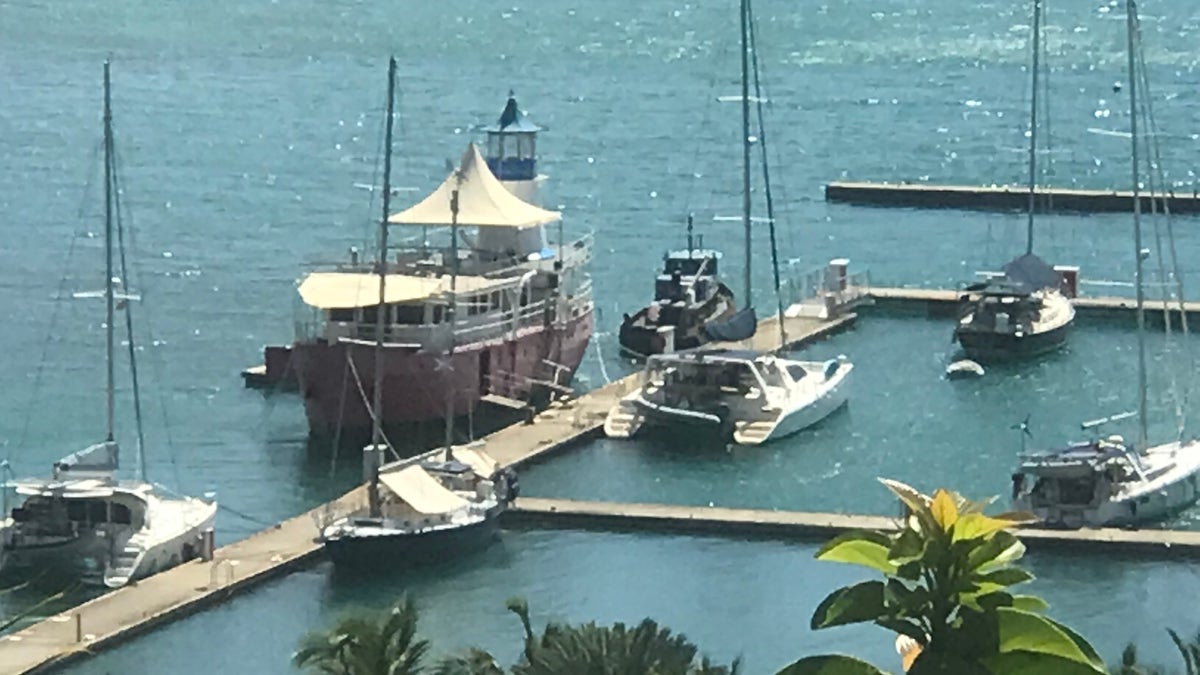
A tipster spotted the Siren Song catamaran at a dock in Grenada months after Sarm Heslop's disappearance from the vessel when it was moored in the U.S. Virgin Islands. (Provided to Fox News Digital)
AMERICAN SWIMMING CHAMP FOUND DEAD IN US VIRGIN ISLANDS, INVESTIGATION UNDERWAY
Although the boat is believed to have been sold, cleaned and partially remodeled, Johnston believes it may still have some forensic value if investigators sought to locate it.
As for Bane, he has returned to his home state of Michigan , where his ex-wife's cousins confronted him last month after he approached them in a gym in Lake Orion.
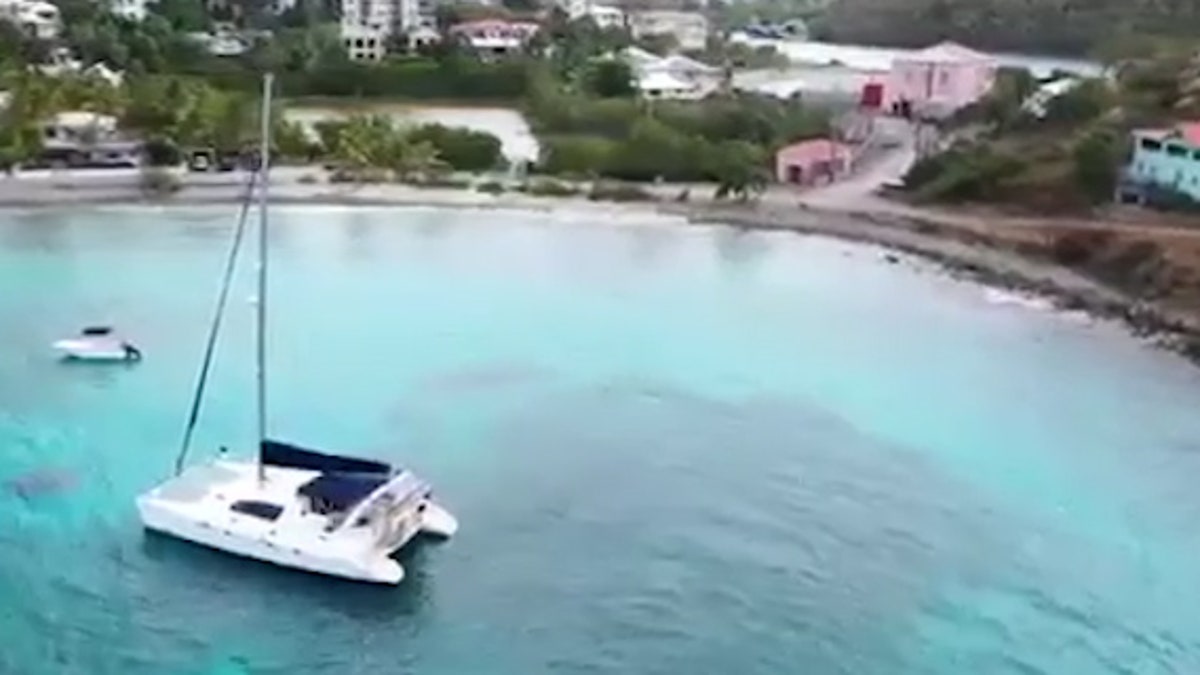
The Siren Song moored in St. John, U.S. Virgin Islands, as seen in aerial drone footage in March 2021. (FindSarm.com)
The men said Bane approached one of them before they began taking pictures of him and asked if he'd "killed anyone lately."
MYSTERIOUS US VIRGIN ISLANDS DEATH OF ALABAMA WOMAN, 22, UNEXPLAINED BY AUTOPSY: MEDICAL EXAMINER
The yachtsman was convicted in 2011 of domestic violence against his wife at the time, Corie Stevenson, who came forward with her story after learning of the circumstances surrounding Heslop's disappearance.

The booking photo from Bane's 2011 domestic violence arrest. (Oakland County Sheriff's Office )
Bane and Heslop left the 420 for Center Bar in Cruz Bay around 10 p.m. March 7, 2021. Police have reviewed, but not publicly released, surveillance video that shows the couple headed to Bane's dinghy a few minutes later. Around 2:30 a.m. the following morning, Bane called VIPD to report Heslop missing. He was told to alert the U.S. Coast Guard if she'd fallen overboard.
US VIRGIN ISLANDS MISSING SARM HESLOP: ‘NOT NORMAL’ FOR POLICE NOT TO SEARCH BOYFRIEND'S YACHT, EXPERT SAYS
He called the USCG between nine and 10 hours later but refused to permit responding service members to search the cabin of his boat.

Sarm Heslop smiles in an undated photo provided by her friends and family, who have banded together to demand answers in her unsolved disappearance. (FindSarm.com)
Then he hired the high-profile attorney David Cattie , who previously represented Jeffrey Epstein's accomplice, Ghislaine Maxwell.
Cattie previously told Fox News Digital his client would return to the Virgin Islands if his presence was "legally required."
CLICK HERE TO GET THE FOX NEWS APP
"Mr. Bane had nothing to do with Sarm’s disappearance and remains heartbroken that she is missing," he said.
Bane has not been charged with a crime in Heslop's disappearance.
While the Virgin Islands Police Department has jurisdiction over local offenses, the FBI urges anyone who believes they are a witness or victim to a federal crime to call them directly at 1-800-CALL-FBI or to call the local field office in San Juan, Puerto Rico.
Additionally, the U.S. Coast Guard says anyone who needs help in U.S. waters should reach out over VHF radio on channel 16 with their GPS location and the nature of their emergency.
Michael Ruiz is a reporter for Fox News Digital. Story tips can be sent to [email protected] and on Twitter: @mikerreports

The hottest stories ripped from the headlines, from crime to courts, legal and scandal.
You've successfully subscribed to this newsletter!


Crews suspend search for missing NC boater who vanished during offshore fishing trip
O AK ISLAND, N.C. (WNCN) — New photos and new information were released Monday in the search for a boater who vanished off the North Carolina coast during a fishing trip over the weekend.
THE LATEST: Search restarts for NC fisherman after boat found offshore Wrightsville Beach
Meanwhile, late Monday night, the U.S. Coast Guard said they had suspended the search for Jeffrey Kale, 47, who was last seen around 4 p.m. Saturday departing the Southport Wildlife Boat Ramp in Brunswick County, officials said.
Kale was aboard a white 32-foot Cape Horn center-console boat before he and the vessel disappeared, the U.S. Coast Guard said. The Oak Island Police Department Monday released a photo of the boat and a new image of Kale.
Search restarts for missing NC fisherman after his boat found offshore Wrightsville Beach
“Our extensive search by air and sea with numerous crews, assets, and several good Samaritans, saturated the various areas we believed he may be,” the U.S. Coast Guard said Monday night about a decision to stop the search.
Coast Guard officials in North Carolina received word from Kale’s family that he was overdue from a fishing trip around 10:30 p.m. Saturday.
Oak Island police said Monday they were helping the U.S. Coast Guard in the search for Kale who is from Clover, South Carolina, just south of Charlotte, North Carolina.
“He is an expert fisherman and was well equipped with an Emergency Position Indicating Radio Beacon (EPIRB), satellite phone, and various navigation tools,” Oak Island police said Monday.
The Coast Guard searched fishing grounds and specific areas in the Atlantic Ocean based on Kale’s previous trips and information from his family, police said.
Coast Guard officials said they had focused the search on the Blackjack and Steeples fishing areas, which are 7 miles apart and are located about 30 miles southeast of Southport.
Oak Island police said efforts to find Kale using cellphone location data were attempted but were not successful.
Monday night, the U.S. Coast Guard said it was “with heavy hearts” that they suspended the active search for Kale around 8:20 p.m. Monday
Rescue crews searched for approximately 72 combined hours and covered more than 7,762 square miles, which is nearly the size of Massachusetts, the Coast Guard said.
“The decision to suspend a search is one of the most difficult decisions to make. Our thoughts are with the Kale family,” U.S. Coast Guard Cmdr. Corrie Sergent said in a news release.
For the latest news, weather, sports, and streaming video, head to CBS17.com.

Rupert Murdoch reportedly spent a night on a gurney in a hospital parking lot after he broke his back falling on son Lachlan's yacht
- Rupert Murdoch reportedly broke his back after he fell while aboard his son Lachlan's yacht in 2018.
- The media giant also reportedly tore an Achilles tendon and struggled with cases of pneumonia and COVID-19.
- A new report from Vanity Fair detailed previously unreported health scares experienced by the 92-year-old media mogul.

Rupert Murdoch reportedly fell and sustained serious injuries while aboard his son's yacht in 2018, an incident that led the media mogul to spend a night in a European hospital parking lot, waiting under a tent until he could be flown back to the US.
A lengthy new report from Vanity Fair detailed several previously unreported health scares experienced by the 92-year-old CEO and chairman of News Corporation, including a broken back from the yacht fall, a torn Achilles, seizures, and bouts with pneumonia and COVID-19.
Citing sources close to the family, Vanity Fair reported that the media mogul and his then-wife Jerry Hall were on Lachlan Murdoch's yacht in January 2018 when Rupert fell while using the bathroom overnight, waking Hall, who found him in pain on the floor.
Related stories
The yacht, which was sailing near Guadeloupe, reportedly docked at the nearest island to take Murdoch to the hospital, per Vanity Fair.
However, the hospital on the island was allegedly closed due to a recent fire, so Murdoch was forced to spend a night in the hospital parking lot on a gurney under a tent until a family plane arrived to fly him back to the states to receive medical care.
Sources close to the family said he was in critical condition, and "kept almost dying," according to Vanity Fair.
The incident reportedly left Murdoch bedridden for months, during which he was spoon fed by Hall as he recovered. According to the report, Murdoch later tore an Achilles tendon after tripping over a box in March 2019, leaving him wheelchair-bound. He also reportedly spent time in the hospital with pneumonia and seizures during this convalescent period.
Murdoch was said to be much more careful during the pandemic than Fox News hosts were advising the public to be, and people close to the family told Vanity Fair that he and Hall stayed home for months at a time in 2020. Murdoch was also one of the first people to receive a dose of the COVID-19 vaccine as Fox hosts criticized preventative measures like the vaccines and masks.
Despite his precautions, Murdoch was reportedly diagnosed with COVID-19 just days before his granddaughter's wedding in July 2022, and appeared "very weak," with Lachlan "holding him up to get from place to place," a guest told Vanity Fair.
Representatives for Murdoch and Hall did not immediately respond to Insider's request for comment.
- Main content
Russia-Ukraine war latest: Putin 'may launch all-out bid to seize second city' - as Western officials fear major Russian advance
Russia has launched fresh strikes on critical infrastructure - with Kyiv residents told to cut energy consumption every night for the rest of 2024. Meanwhile, Western officials reportedly fear a major Russian advance - amid concerns Vladimir Putin could launch an attempt to seize Kharkiv.
Saturday 13 April 2024 14:06, UK
- Ukrainian defences 'at risk of collapse' as officials fear major Russian advance - and all-out assault to seize second city
- Russia hits critical infrastructure in overnight missile strikes
- Putin mocks peace conference
- The big picture : Everything you need to know about the war this week
- Your questions answered: Is it too late to save Ukraine?
While we haven't been able to bring you live updates today, we have been keeping an eye on what's been happening in the Ukraine conflict.
Here's a quick round-up of the key updates so far:
At least 10 people, including children, have been killed by shelling in a Russian-occupied town in Ukraine's southern Zaporizhzhia region, a local Kremlin-installed official said.
A Ukrainian rocket also struck a machine-building plant in Russian-occupied Luhansk in eastern Ukraine, injuring three civilians, according to Moscow-based official Vladimir Rogov.
Meanwhile, Russia has claimed to have taken a village in Ukraine's Donetsk region.
Russia's defence ministry said the capturing of Pervomaiske had improved its tactical position on the frontline.
Ukraine's army chief has also warned the situation on the eastern front had deteriorated in recent days, with Moscow's forces intensifying its armoured assaults.
Colonel General Oleksandr Syrskyi said battles were still raging for control of a village west of the devastated Bakhmut - an area that has seen some of the bloodiest fighting throughout the war.
We'll be back tomorrow morning with more updates on the war in Ukraine.
Two Biden administration officials have revealed the extent of China's involvement in Russia's war on Ukraine.
The officials spoke to Reuters news agency and said China has massively increased its sales to Russia of machine tools, microelectronics and other technology to Moscow.
These items are important because Russia is using them to make tanks, aircraft, missiles and other weapons for the war.
They also said:
- About 90% of Russia's microelectronics came from China
- Nearly 70% of Russia's approximately $900m in machine tool imports in the last quarter of last year came from China
- Chinese and Russian entities have been working together to make drones in Russia
- China is helping Russia improve its satellite and other space-based capabilities for use in the war. This could increase the threat Russia poses across Europe
US President Joe Biden has previously raised concerns with Chinese President Xi Jinping about Beijing's indirect involvement in the war.
US Treasury Secretary Janet Yellen returned this week from a visit to Beijing and said she had warned China that the Biden administration was prepared to sanction Chinese banks, companies and Beijing's leadership if they helped Russia's military in the war.
She has already been given the go-ahead from Mr Biden to sanction financial institutions that help Russia's military-industrial complex.
US Secretary of State Antony Blinken is due to travel to China for talks next month.
Russia, increasingly isolated economically and diplomatically, has become more reliant on China in recent months.
One official said Chinese materials are helping Moscow undertake its "most ambitious defence expansion since the Soviet era and on a faster timeline than we believed possible early on in this conflict".
"Our view is that one of the most game-changing moves available to us at this time to support Ukraine is to persuade the PRC (China) to stop helping Russia reconstitute its military industrial base. Russia would struggle to sustain its war effort without PRC input," the official said.
Chinese Embassy spokesperson Liu Pengyu told Reuters that Beijing has not provided weapons to any party and that it is "not a producer of or party involved in the Ukraine crisis".
"We urge the US side to refrain from disparaging and scapegoating the normal relationship between China and Russia."
If Russia defeats Ukraine it will be a "turning point in history", former UK prime minister Boris Johnson says.
Writing in the Daily Mail, he criticised Western countries for not providing Ukraine with the weapons it needs to defeat Russia.
"Every week in which we fail to do the obvious — and give the Ukrainians the weapons they need — is a week in which Putin gets closer to his disgusting ambition, to torture a European country to death.
"Every day the pressure on the Ukrainians is growing — and yet the solution is within our grasp."
Mr Johnson, who visited Ukraine a number of times during his premiership, said: "A defeat for Ukraine would usher in a new era of fear in the whole Euro-Atlantic area, as Putin continues his drive to rebuild the Soviet empire: from the Baltics to Georgia to Moldova to Central Asia to the Arctic.
"It will be a terrifying moment for the people of Taiwan and the clearest possible signal to China that the West has lost the willpower to protect democracy.
"It will be a turning point in history, the moment when the West finally loses its post-war hegemony, the moment when borders everywhere are suddenly up for grabs and aggression is seen to pay — and all because of a failure to stand up for Ukraine."
Mr Johnson warned the world is "on a knife-edge, with a real risk that Western democracies are about to be humiliated, and autocracies emboldened around the world — because of our lassitude, our pathetic refusal to do what is necessary".
He said Ukraine is so short of shells that its troops sometimes have to wait under Russian bombardment because they can't fire back.
The shortage of air defences means Kharkiv, the second-largest city, is "in danger of being turned into another Mariupol", he added.
Ukrainians were able to intercept 90% of incoming strikes, he said, but now "we are starving them, for reasons I do not understand, of the protective shields they need".
Mr Johnson called on the US Congress to approve a $60bn military aid package earmarked for Ukraine and on the Germans to supply Taurus missiles.
The West - including Britain - needs to "snap out of our sleep-walk", he said, adding: "The simplest and most cost-effective way to defend freedom is to invest now in the defence of Ukraine."
Rescue workers in Ukraine have saved five puppies from under the debris of a destroyed building.
The non-residential building was on fire in the north-eastern city of Sumy, close to the border with Russia.
A video from the State Emergency Service of Ukraine showed the firefighters cuddling the squealing puppies and rinsing them off with water.
In a post of the emergency service's Telegram channel, officials said the "little ones" were not injured.
"This rescue story reminds us of the importance of human compassion and the willingness to help everyone, regardless of the circumstances," they added.
Ex-armed forces minister James Heappey has told Sky's defence and security editor Deborah Haynes the UK should consider sending its forces to Ukraine to train troops.
On the Sky News Daily, host Tom Cheshire talks to her and Sky's military analyst Professor Michael Clarke about the interview with Mr Heappey, who stepped down from his role last month.
They assess the bleak situation in Ukraine and why the conflict is at a critical stage. They also discuss how prepared the UK would be if it faced a war in the near future.
A former Ukrainian secret service employee has been injured in Moscow after a device under his car exploded.
Vasily Prozorov suffered leg injuries that are not considered life threatening after the device detonated as he tried to start his car, Radio Free Europe cited Russian media as saying.
According to RFE, Mr Prozorov worked for Ukraine's SBU until 2018.
The following year, he told media in Moscow that he had collaborated with Russia "for ideological reasons" from April 2014 until he left the SBU.
These photos show the damage to a thermal power plant in Kharkiv, eastern Ukraine.
A massive missile and drone attack destroyed and damaged a number of power plants across Ukraine overnight, part of a renewed Russian campaign targeting energy infrastructure.
The Trypilska plant, which was the biggest energy supplier for the Kyiv, Cherkasy and Zhytomyr regions, was struck numerous times, destroying the transformer, turbines and generators.
Vladimir Putin said the attacks were a response to Ukrainian strikes that targeted Russian oil refineries.
In Kharkiv, there were at least 10 other strikes on energy infrastructure, resulting in damage like that seen in these photos.
Ukraine's foreign minister Dmytro Kuleba said more than 200,000 people in the region were without power.
Herman Halushchenko, its energy minister, said it was a "large scale, enormous, missile attack that affected our energy sector very badly".
More details have emerged about American Russell Bentley, who is missing in the Russian-controlled Donetsk region in eastern Ukraine.
Online news outlet Mash said he disappeared on 8 April after a district in the city of Donetsk was shelled by Ukrainian forces.
Mash cited his wife as saying he had gone to see if anyone needed help but had not returned.
Mr Bentley joined pro-Russian fighters in eastern Ukraine in 2014.
According to Russian news outlet RIA, he later swapped his gun for journalism and worked with state-run news outlet Sputnik.
In a 2022 Rolling Stone interview, he came across as a conspiracy theorist (he said the collapse of the World Trade Towers was a "pre-planned controlled demolition") and a fan of dictators (he described war crimes-accused former Libyan leader Muammar Gadhafi as "one of the greatest").
He became a citizen of the Donetsk People's Republic in 2017 and a citizen of Russia in 2020, said the interview, which was headlined The Bizarre Story Of How A Hardcore Texas Leftist Became A Frontline Putin Propagandist.
In words similar to those of Russia's president Vladimir Putin, Mr Bentley described the Ukrainian military as "genuine mass-murdering Nazis", also claiming their ranks were swelled by "thousands of ISIS cannibals" - claims that have been widely dismissed by commentators.
The Netherlands will provide Ukraine with an additional €1bn (£850m) in military support this year, and has earmarked three-times that amount for next year.
Dutch Prime Minister Mark Rutte delivered the news in a social media post.
The extra support in 2024 takes the total sum for this year to €3bn (£2.56bn), along with €400m (£340m) to support Ukraine's economy, Mr Rutte said.
"Ukraine must win this battle - for their and our safety," he said.
Be the first to get Breaking News
Install the Sky News app for free


IMAGES
VIDEO
COMMENTS
Safety is paramount when sailing at night. Even during the day, there are clear rules regarding the movement of the crew on board. Basically, the crew should not stand unless they are engaged in manoeuvres. In all other cases, they should be sitting on benches, at the side of the boat when heeling, or in the cabin.
Generally night sailing falls into one of two categories: the first is a one-off night sail, such as the start of a summer cruise to get the boat to your cruising ground, or perhaps a RORC or JOG ...
Night sailing spacial awareness. The visual horizon, reducing with darkness, needs to be replaced by the projection of spacial awareness. If you struggle with this break it down to focus on each of its components and layer by layer it will become a reliable comfort, effortlessly adjusting for tide, wind, waves and the quirks of your boat.
Browse 4,677 yacht at night photos and images available, or search for luxury yacht at night to find more great photos and pictures. Boston Harbor. City skyline after sunset. Cruise, travel and luxury with people on a boat in the ocean for adventure during summer vacation or holiday.
Stay on deck while night sailing. As always with pilotage, the right place to be is on deck, not least to avoid uncharted objects such as other craft, mooring buoys and fishing pot markers. Most pilotage errors occur at night rather than in the day so a thorough pilotage plan is essential. Even with a navigation station filled with electronic ...
Browse 19,800+ yacht night stock photos and images available, or search for sailing yacht night to find more great stock photos and pictures. Night view to large illuminated white boat located over horizon,... Luxury yacht in marina at night. Big yacht in a italian marina at night.
Here are a few safety tips for night boating: Move slowly: You should move your boat at a slower speed than normal. The low visibility makes it harder to see defining features, so it's essential to slow down. Reducing your boat's speed makes it easier to adapt to sudden changes or redirect your position.
Water is very important for keeping the mind alert on night watch. In fact, dehydration is often mistaken for fatigue. Keep a water bottle on deck - One of our friends has a rule that anyone who yawns on the boat must take a drink of water. Every member of the crew should keep a water bottle on deck when on watch.
Assuming you have an autopilot or the boat can be persuaded to steer herself for a while, keeping a three-hour watch in decent weather is not onerous. Don't sit in the cockpit thinking about your overdraft. Move around. Scrutinise the horizon first. If there's no shipping, pop down below and put on the kettle.
Instead, you should ask one person to get some sleep earlier in the day. By doing so, that person will be ready to take the helm later in the evening. If your boat has a two-person crew, setting a sleep schedule is critical to the success of an overnight run. Most people prefer shifts of three to four hours.
To meet the U.S. coast guard rules for night boating, ensure your boat has the correct lights, the right visual distress signal devices, fire extinguishers, and the required amount of personal flotation devices. 2. Ensure The Boating Equipment Is Working Properly. The second step to boating at night safely is to ensure all the boating equipment ...
Mostly Superyacht traffic on the Miami River at night. Leopards, Lazzaras and More cruise the Miami River on a beautiful evening in Miami.Own a boat? You Nee...
Launched at AK Yachts in April 2021, the 85 metre Victorious first started life fourteen years ago in Northern Chile as a 77 metre explorer. Now featuring exterior design by Michael Leach Design and interiors by H2 Yacht Design, Victorious features an upper deck complete with a sky lounge, cocktail lounge, observation saloon and dining room, a helipad at the bow and a Jacuzzi on the aft deck.
Oslo Aker Brygge Harbour at Night, Norway. of 73. Browse Getty Images' premium collection of high-quality, authentic Sailing Yacht Night stock photos, royalty-free images, and pictures. Sailing Yacht Night stock photos are available in a variety of sizes and formats to fit your needs.
Here are some of the most important tips for making sleeping on a boat easy and restful. Bring plenty of lights and batteries to illuminate different areas of the boat at night, including a bright LED headlamp for hands-free use. Nights on the water can be very cool, so bring cool-weather clothes and warm pajamas, plus a sheet, blanket, or ...
Night navigation requires more preparation of the boat in order to simplify manoeuvring in the dark. You must prepare the boat for night sailing. You have to clear the deck of all unnecessary ropes and prepare the sail for any possible manoeuvres. If you wish to sleep on a sailboat, remember to adapt the sail area, it is not recommended to sail ...
Merchandise: https://teespring.com/stores/super-yacht-captain-2The Music we use on the videos: https://artlist.io/artlist-70446/?artlist_aid=SuperYachtCaptai...
Miami's EPIC Superyachts and Luxury Boats on the Miami River in the Magic City.Merch:https://teespring.com/stores/zipzappowerSupport ZipZapPOWER!https://zipz...
This is what is required, but there are also several other ways that you can make yourself and others as safe as possible when boating at night, such as: Slow down to account for the lessened visibility that boating at night entails. Have somebody on the lookout to act as a pair of extra eyes, keeping an eye out for other ships' lights.
Reef early and often. We found the best way to avoid "all hands" calls in the middle of the night is to set the boat up for the expected overnight conditions before it gets dark and people head to sleep. This doesn't work for racers, of course - they're pushing the boat for every knot of speed all the time.
Anchoring your boat overnight is a vital skill that every boater should know. Proper anchoring ensures your boat's safety and prevents drifting caused by changing wind and tide conditions. When anchored correctly, your boat stays securely in place throughout the night, giving you peace of mind while you rest.
Night-time yachting in Dubai is not just a journey; it's an experience, a tale of romance, luxury, and the magic of moonlight. Whether you're looking to celebrate a special occasion or just wanting to experience the city from a different perspective, a yacht for rent in Dubai is your ticket to an unforgettable nocturnal adventure.
2,000nm range. RINA (Registro Italiano Navale) classification. Sleeps 8 overnight. The 37.5m/123' sail yacht 'Strangers in the Night' (ex. Bushido) was built by Cek-Lift at their Bodrum shipyard. Her interior is styled by design house Alexandra Schoenburg and she was completed in 2004. This luxury vessel's exterior design is the work of Paolo ...
Monsters of Yacht will take over the Washington High School auditorium Saturday at 7:30 p.m. Tickets will be sold at the door. Photos Provided. There are four shows that are part of the Washington Community Concert Series this year including Saturday night's Monsters of Yacht and December's John Berry Christmas Show.
The captain of the Siren Song catamaran had its freezer changed in Grenada after a British woman vanished from the boat in U.S. waters in 2021, investigator says.
Jeffrey Kale, 47, was reported missing by his family Saturday night after he left a Southport boat ramp to fish about 30 miles off the Brunswick County, North Carolina, coast.
Rupert Murdoch reportedly fell and sustained serious injuries while aboard his son's yacht in 2018, an incident that led the media mogul to spend a night in a European hospital parking lot ...
Russia has launched fresh strikes on critical infrastructure - with Kyiv residents told to cut energy consumption every night for the rest of 2024. Meanwhile, Western officials reportedly fear a ...